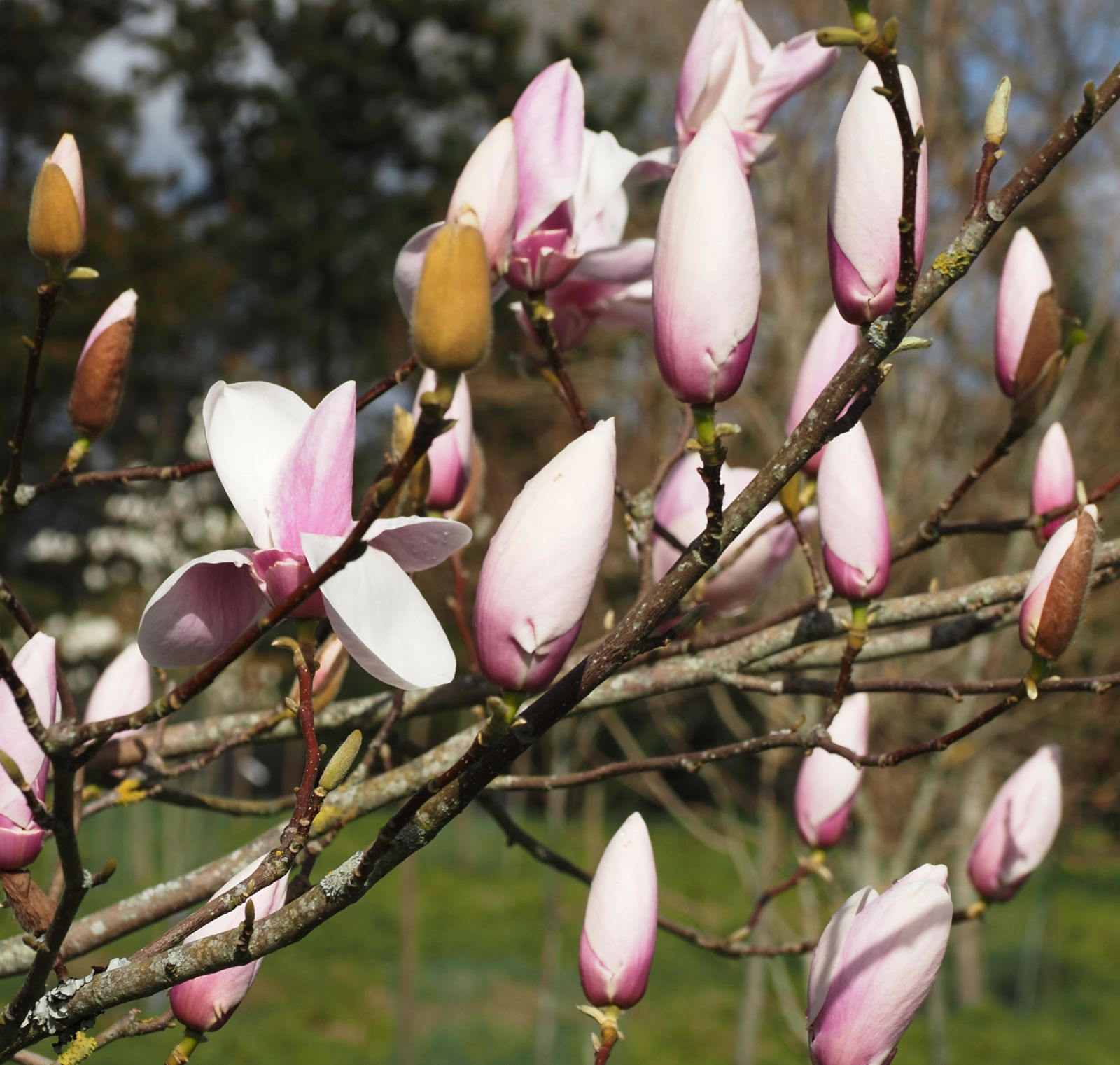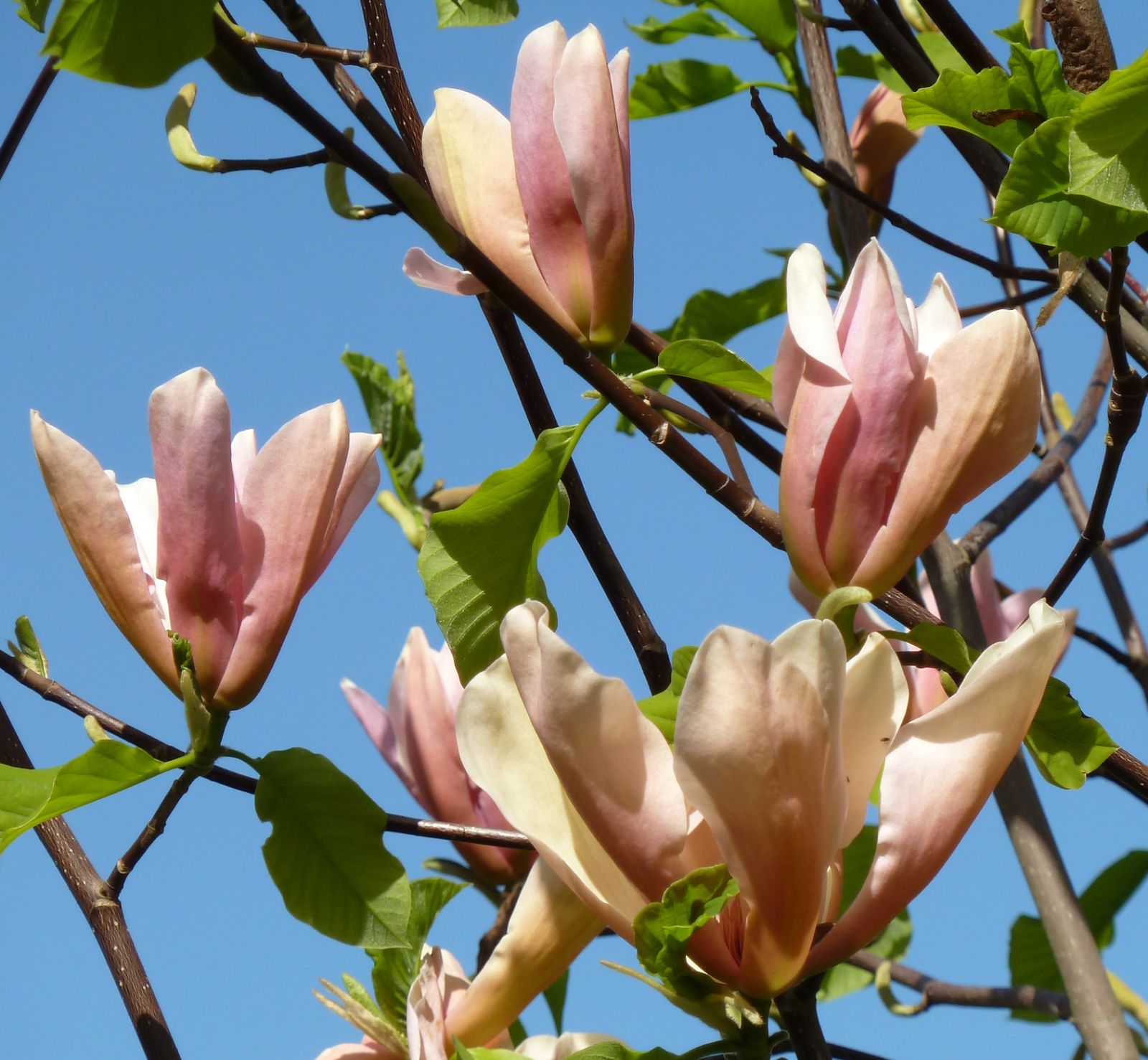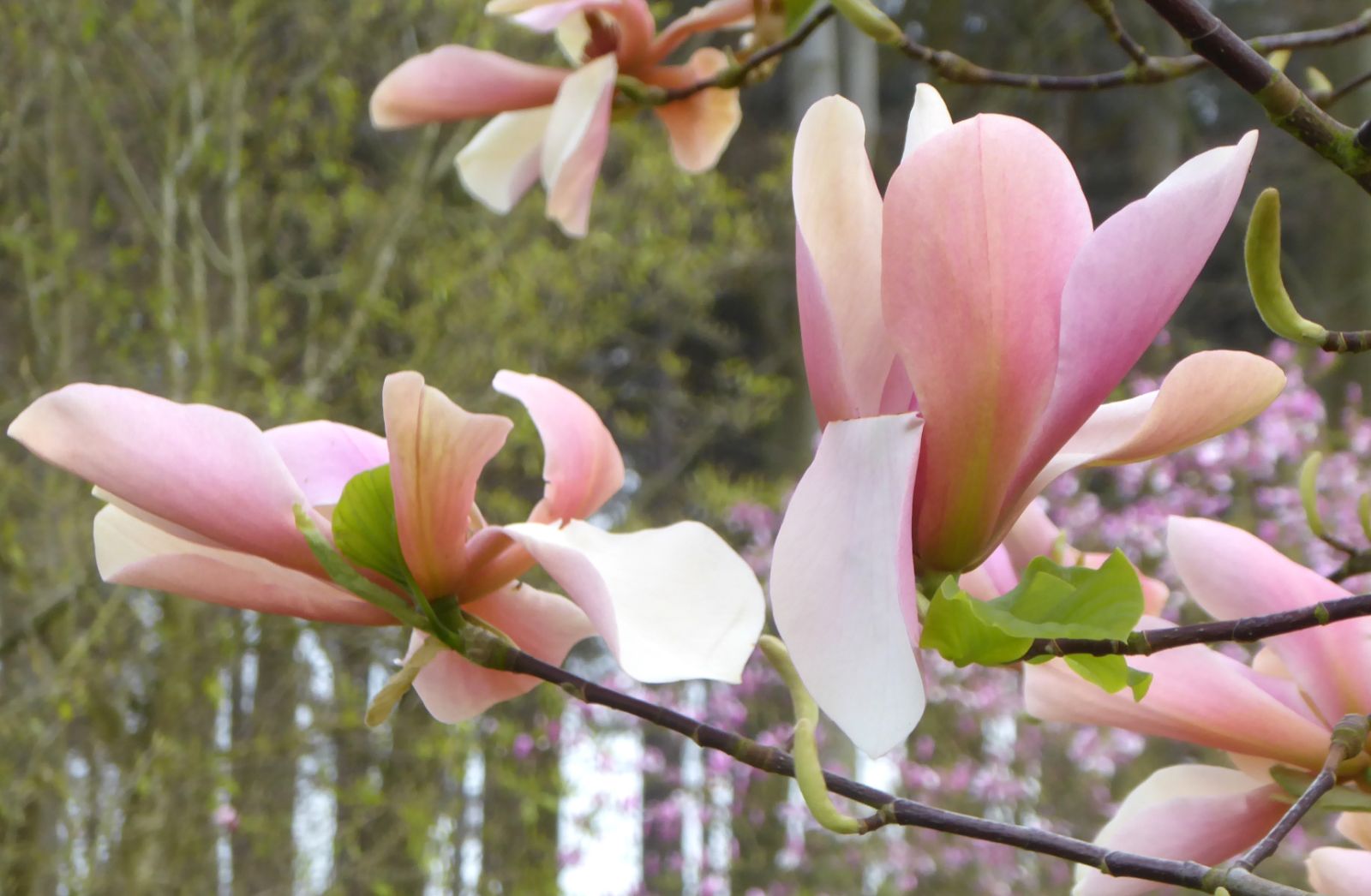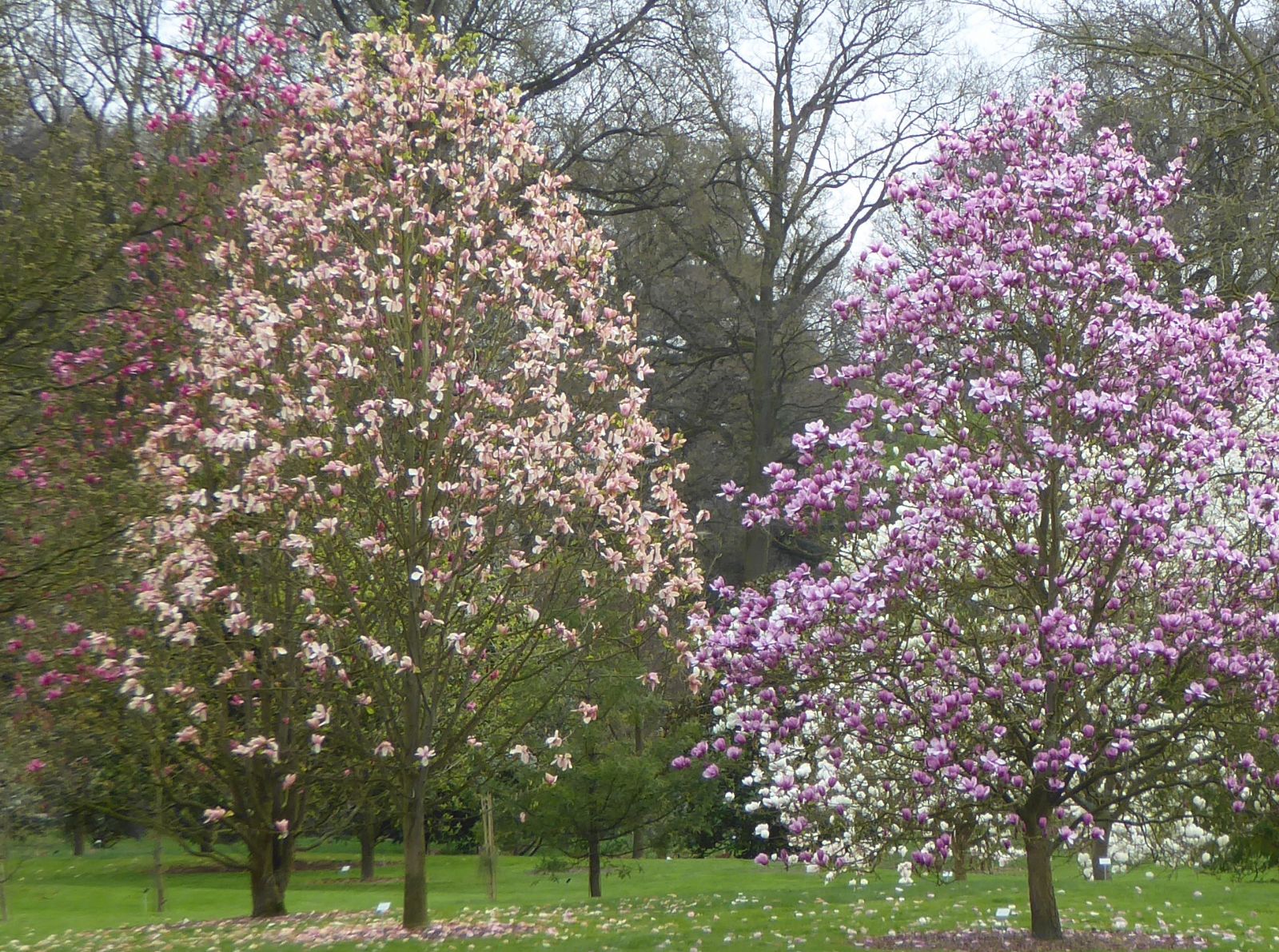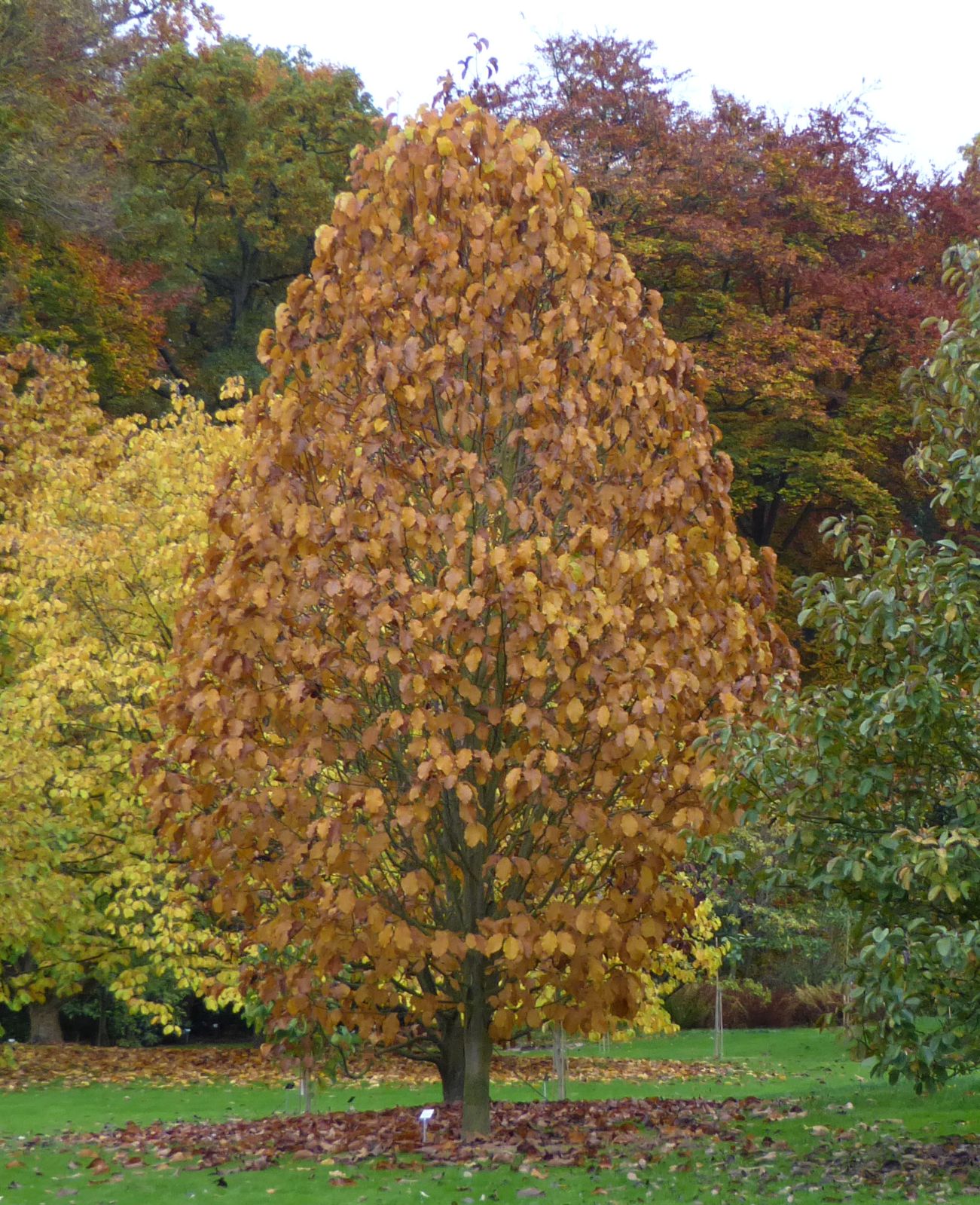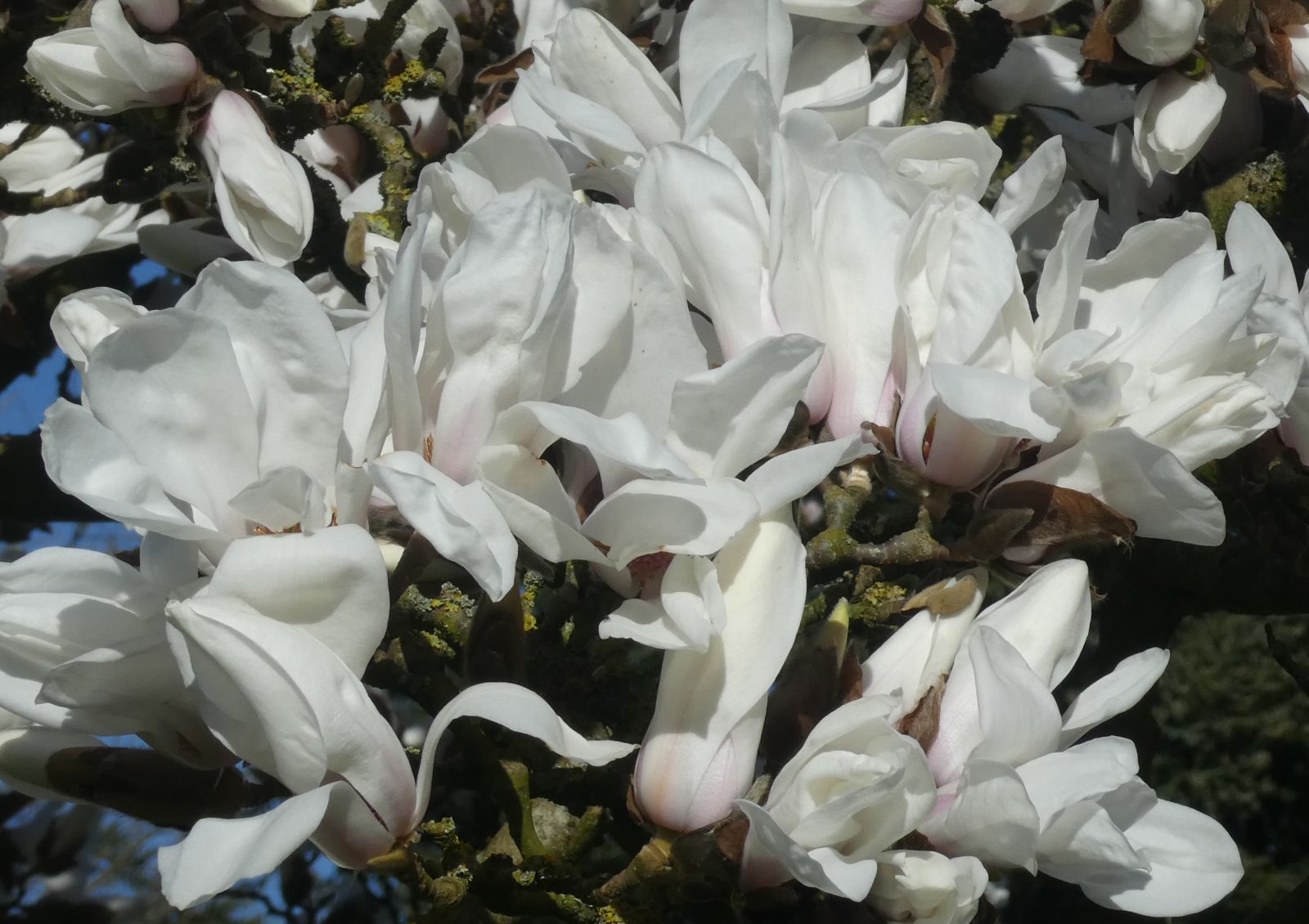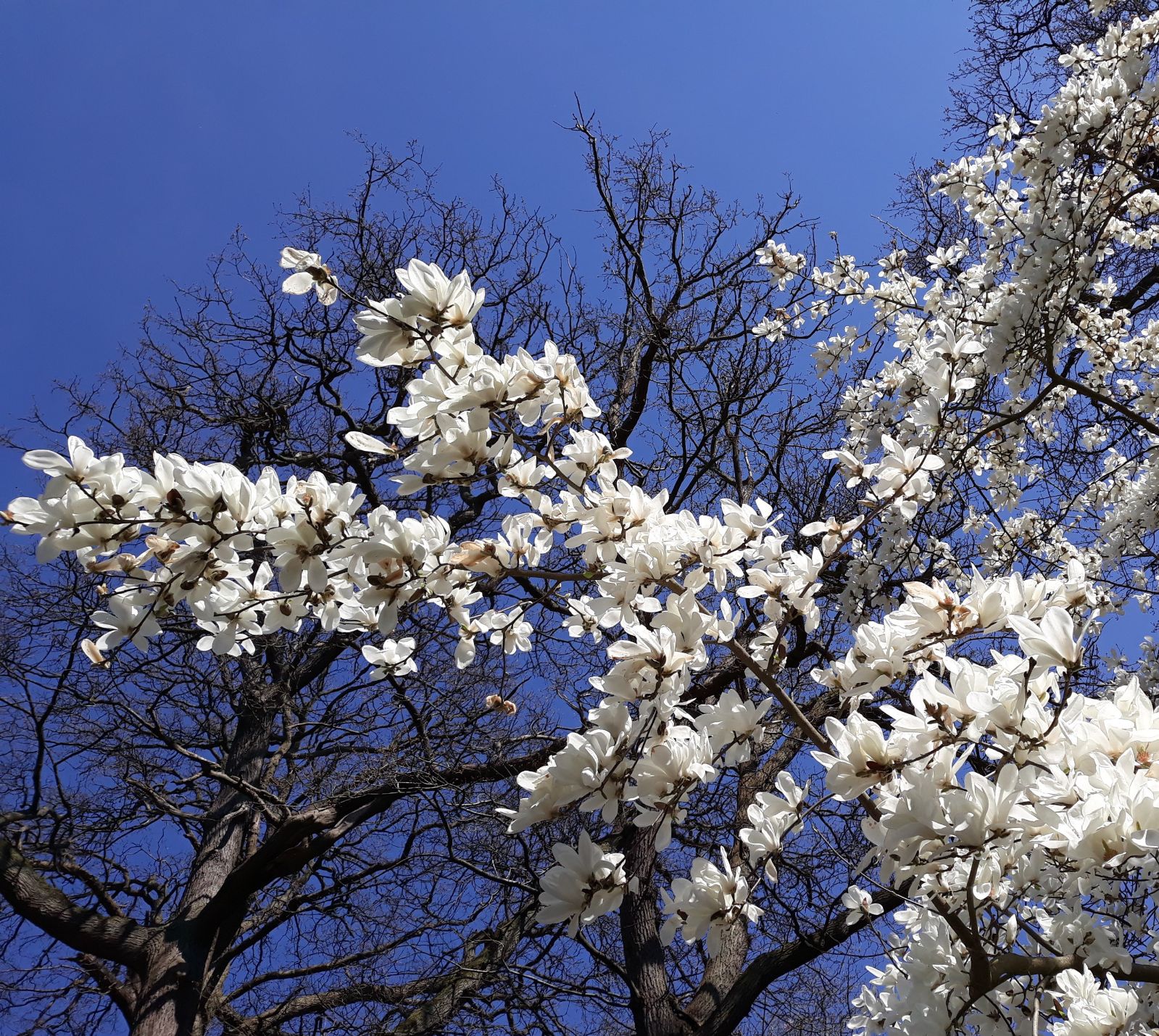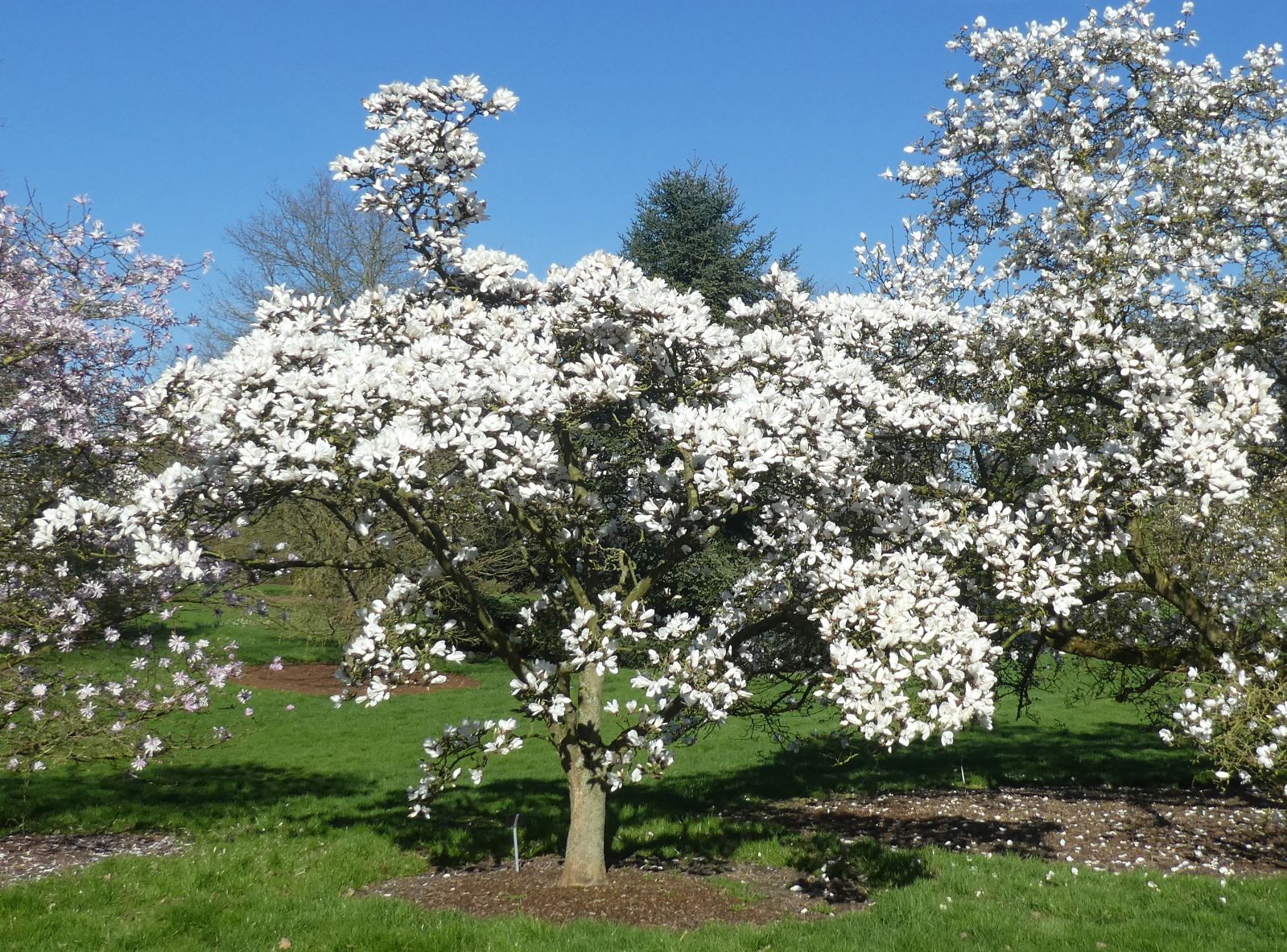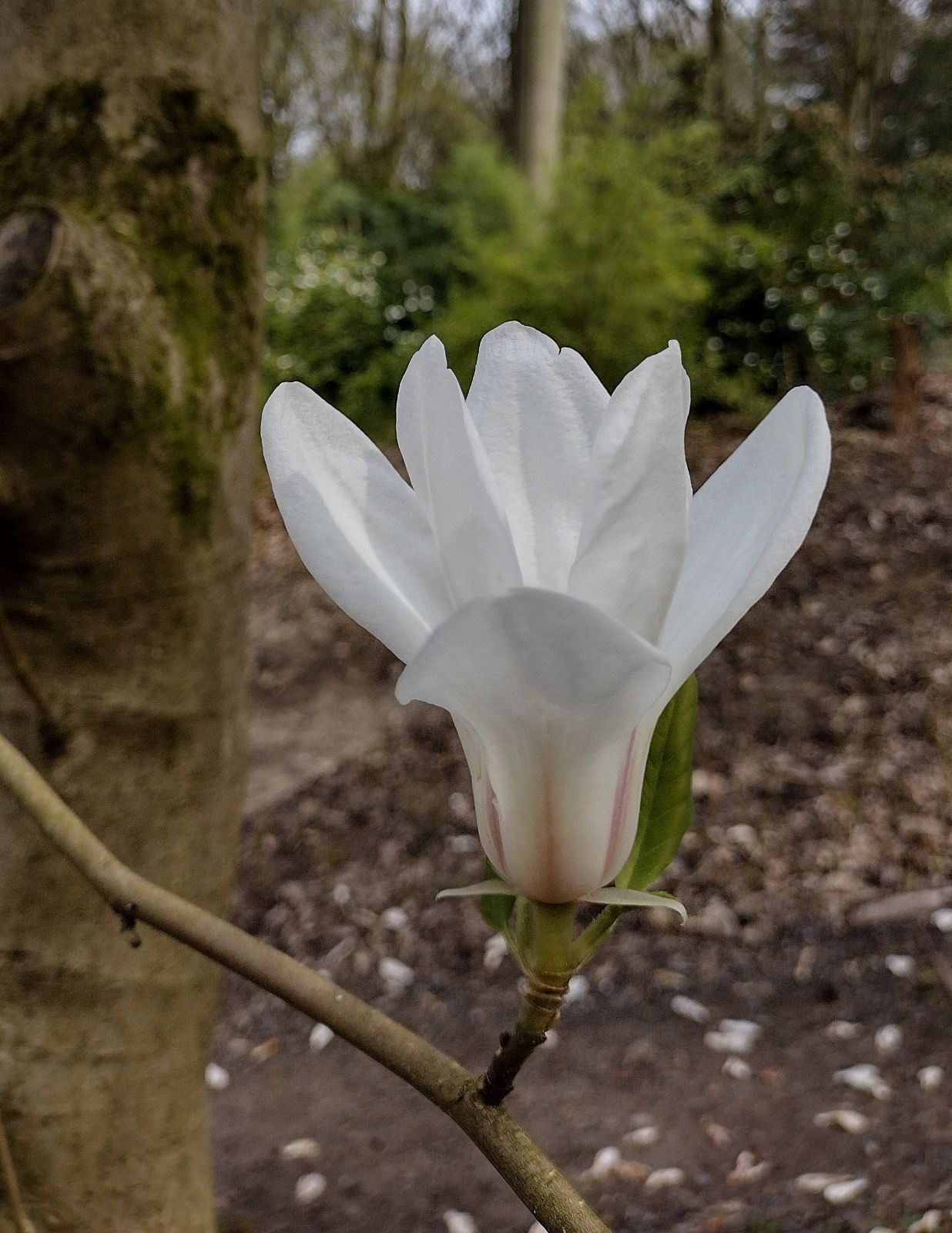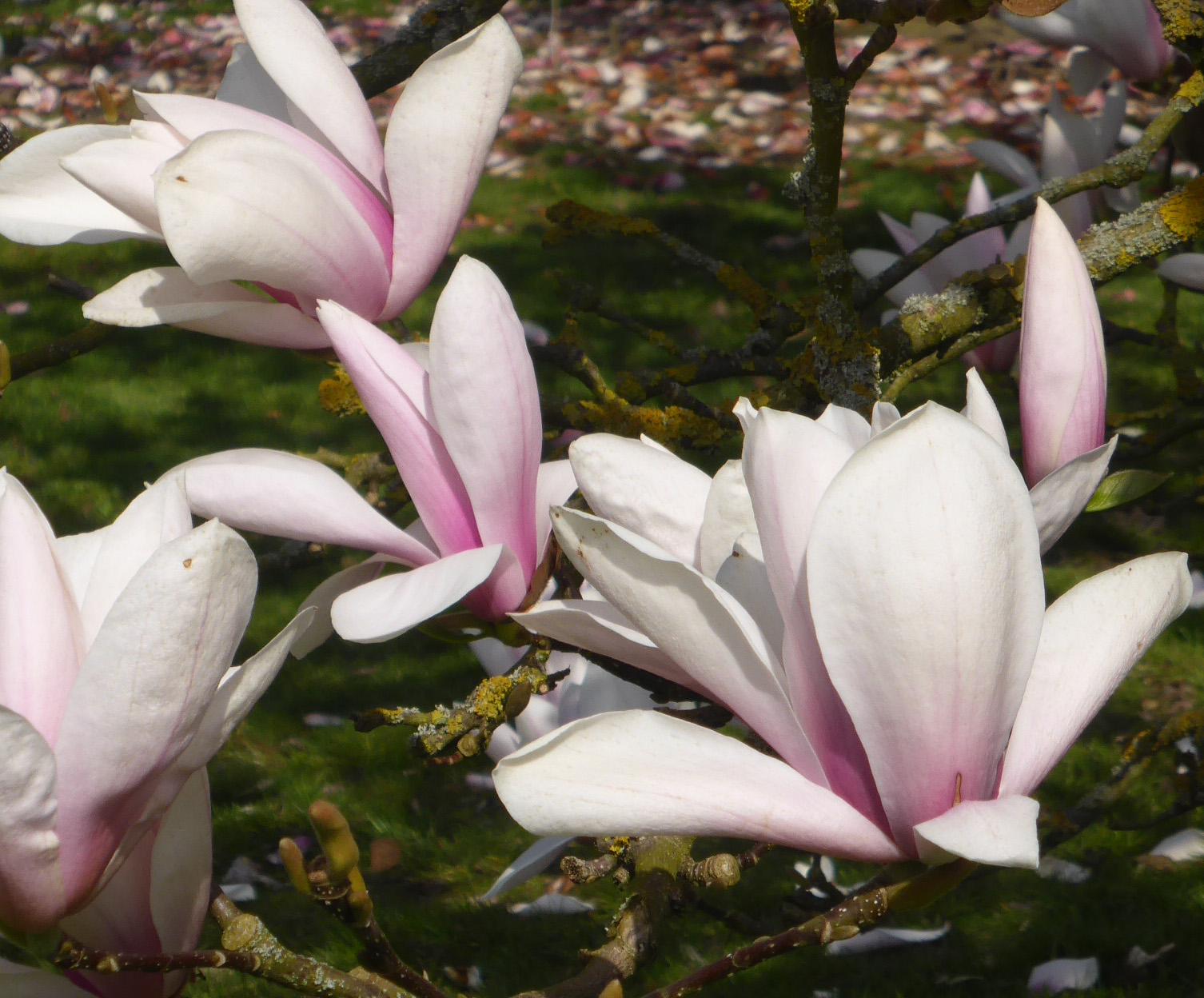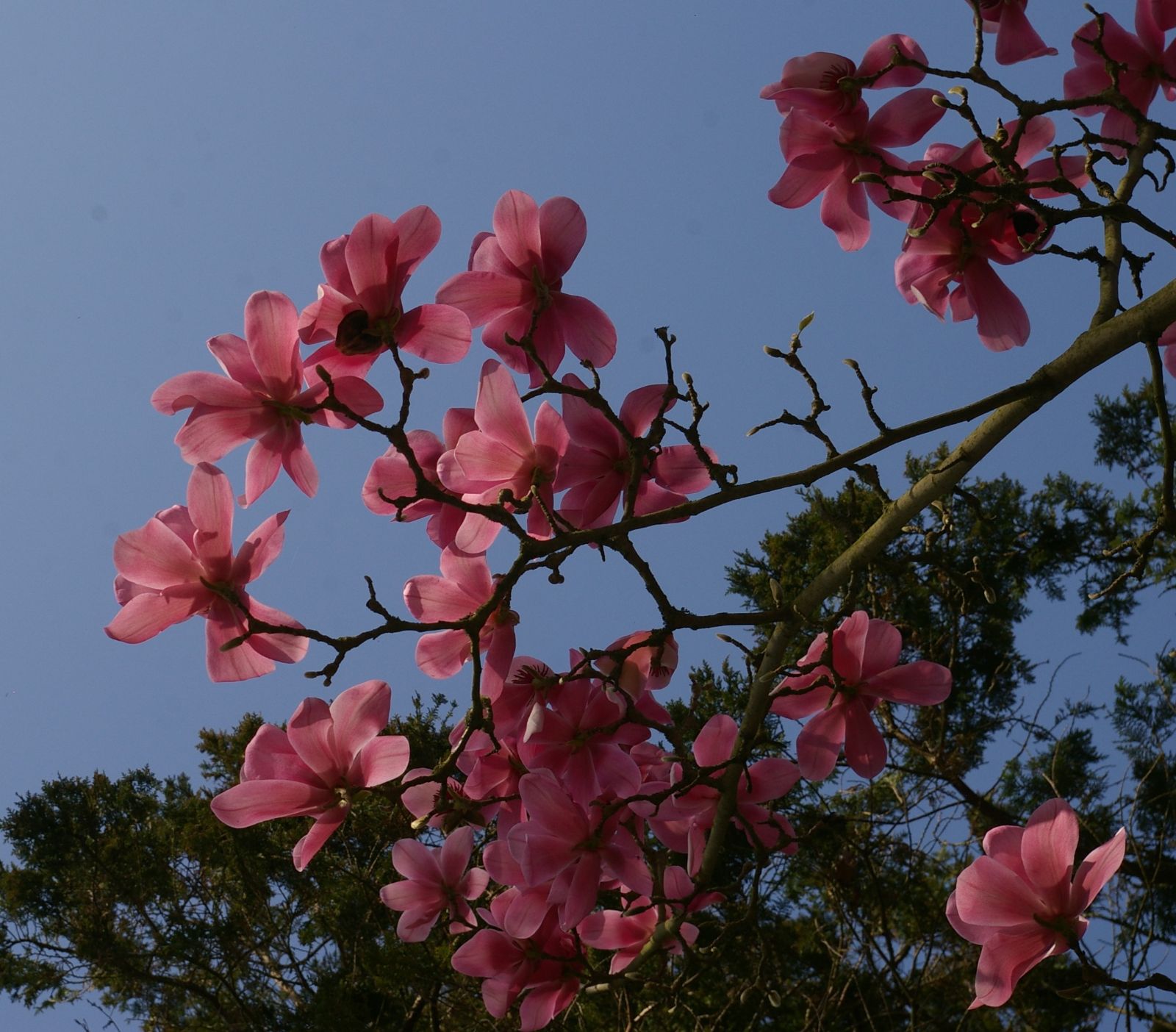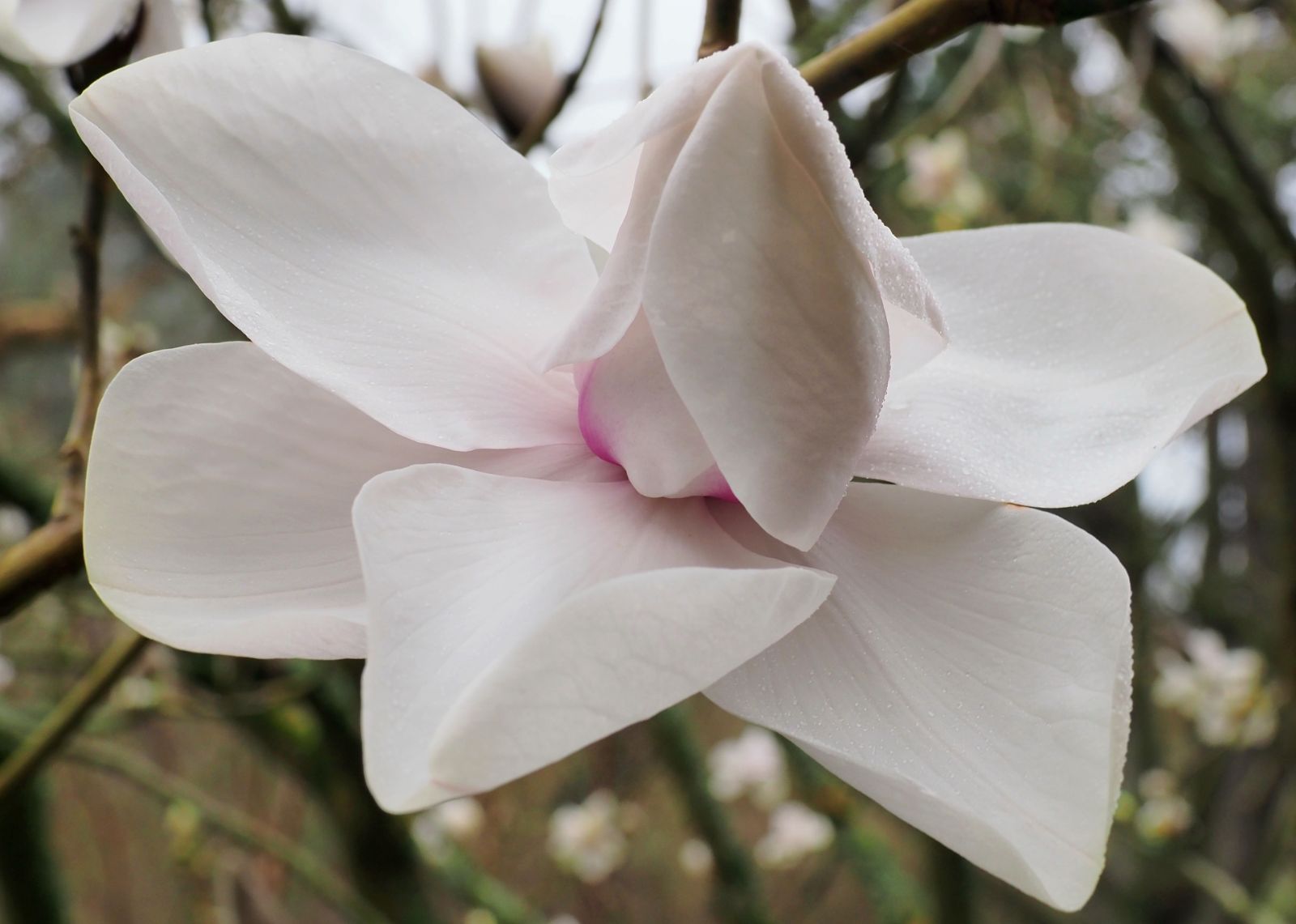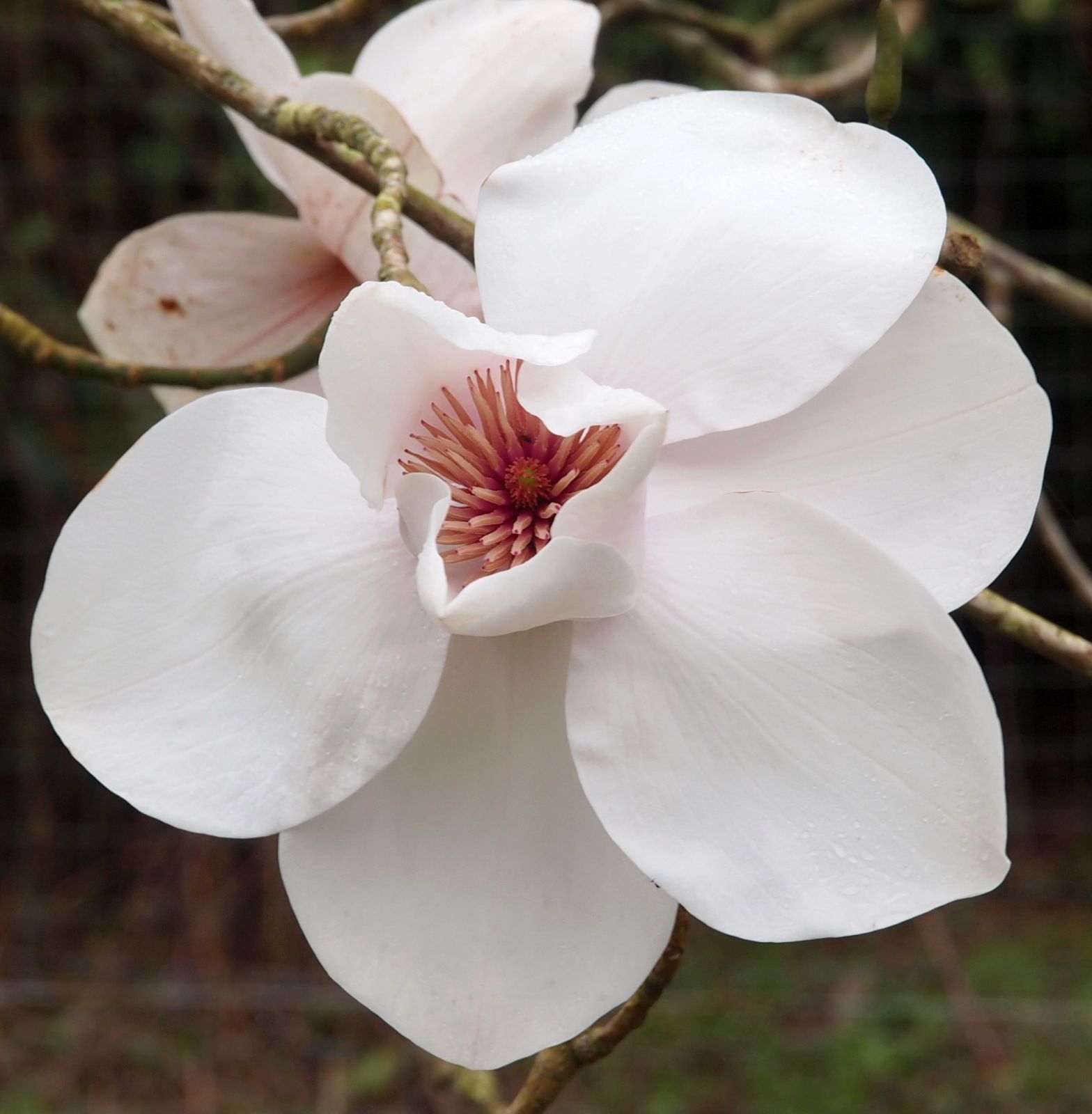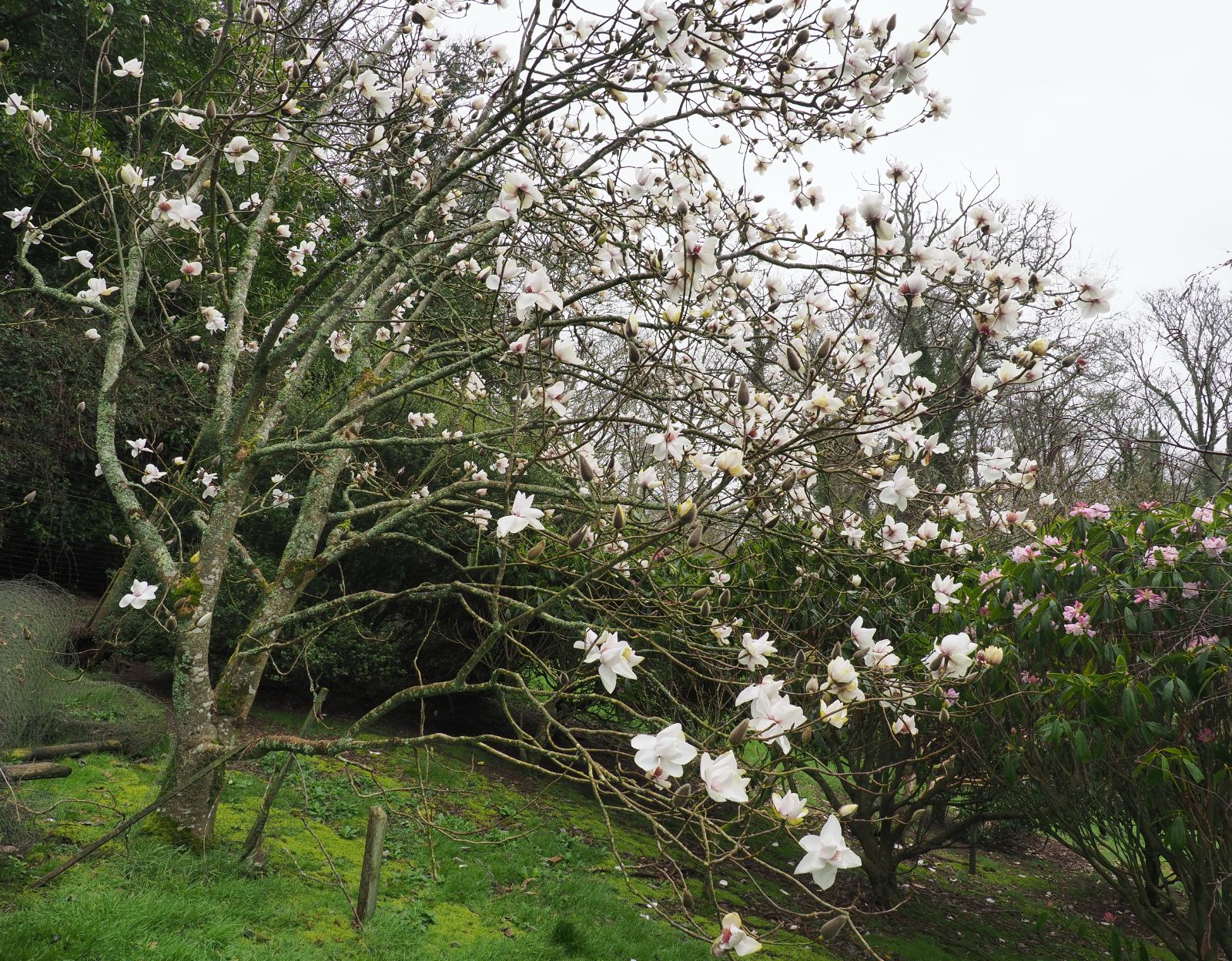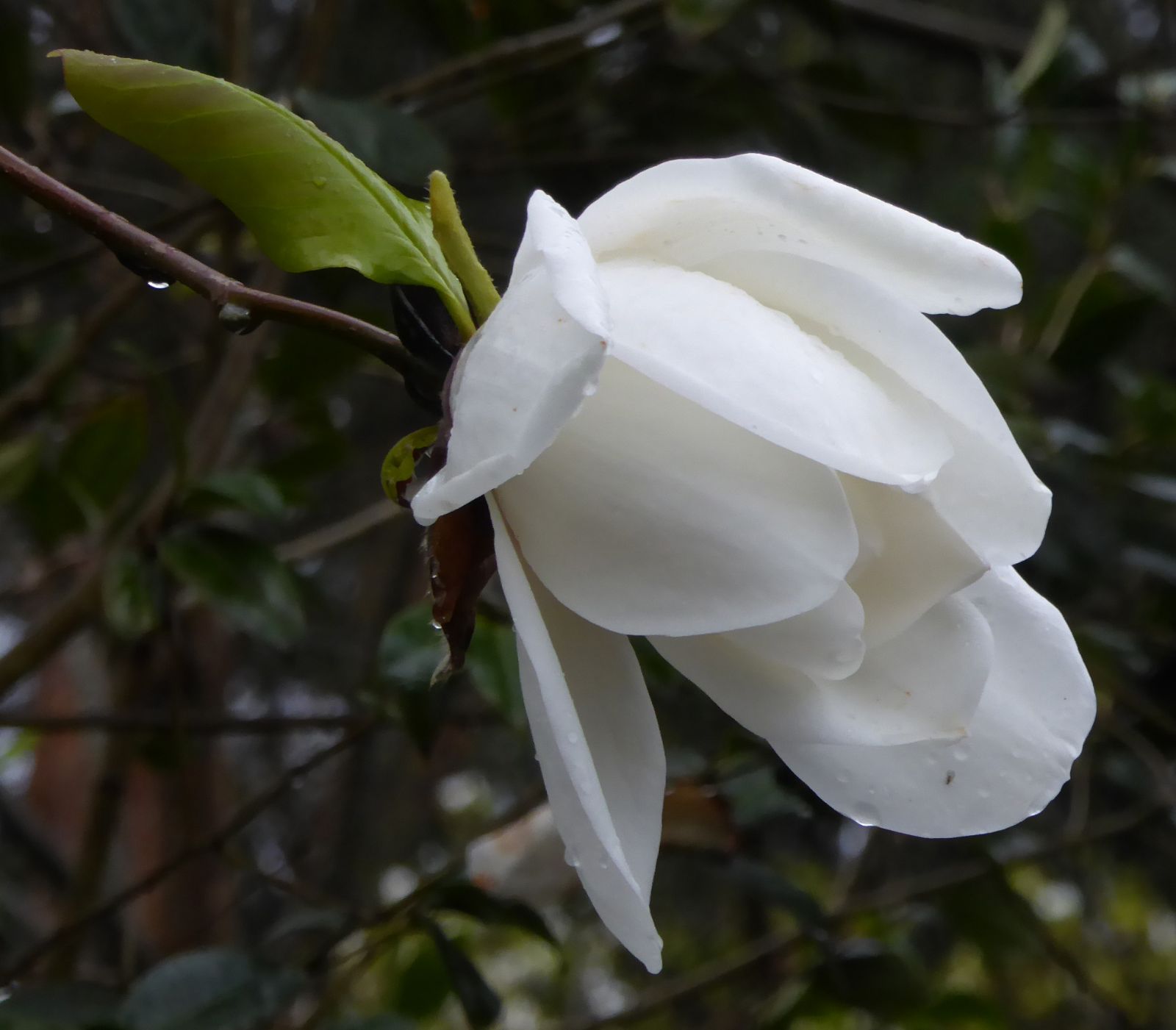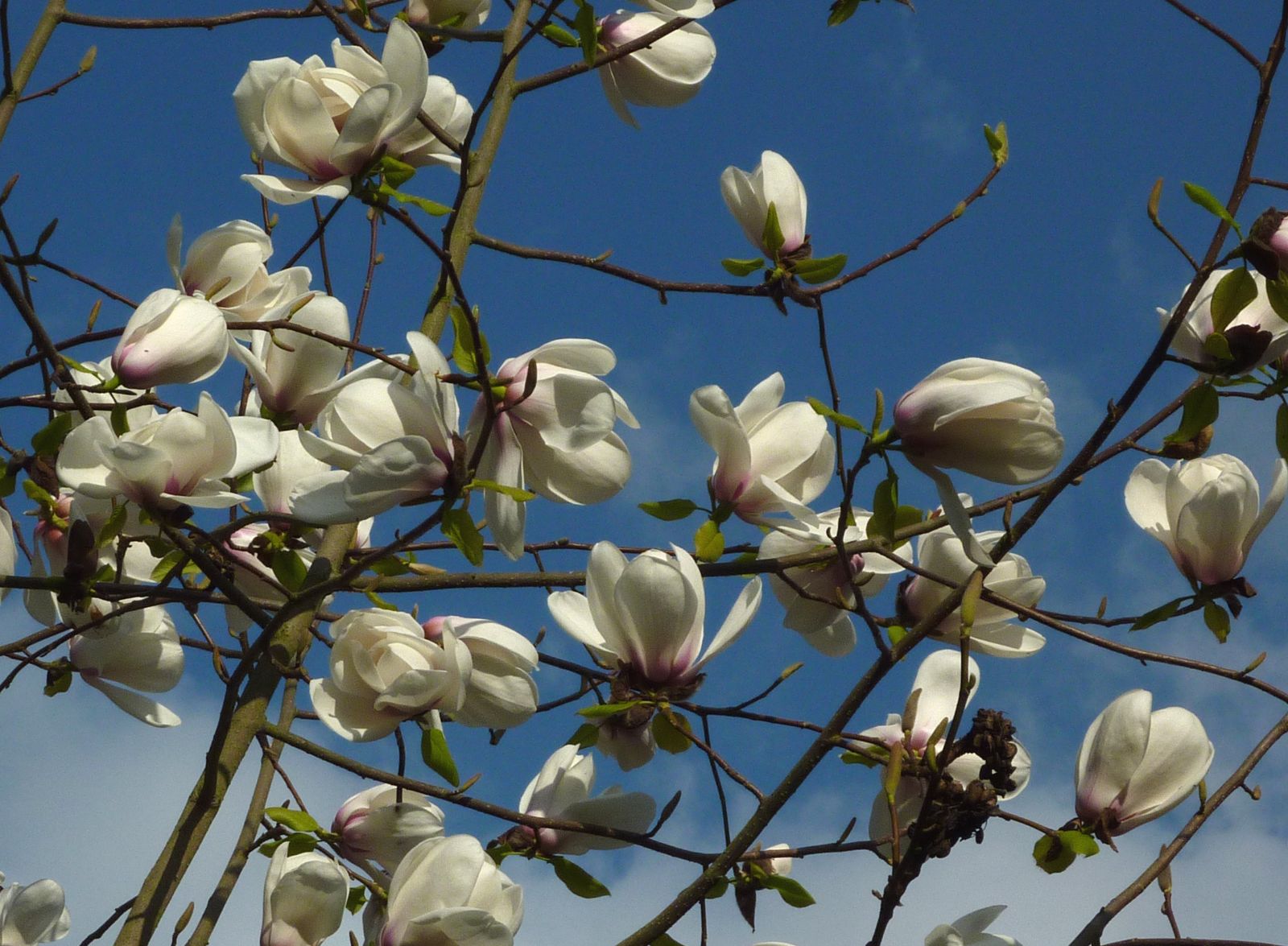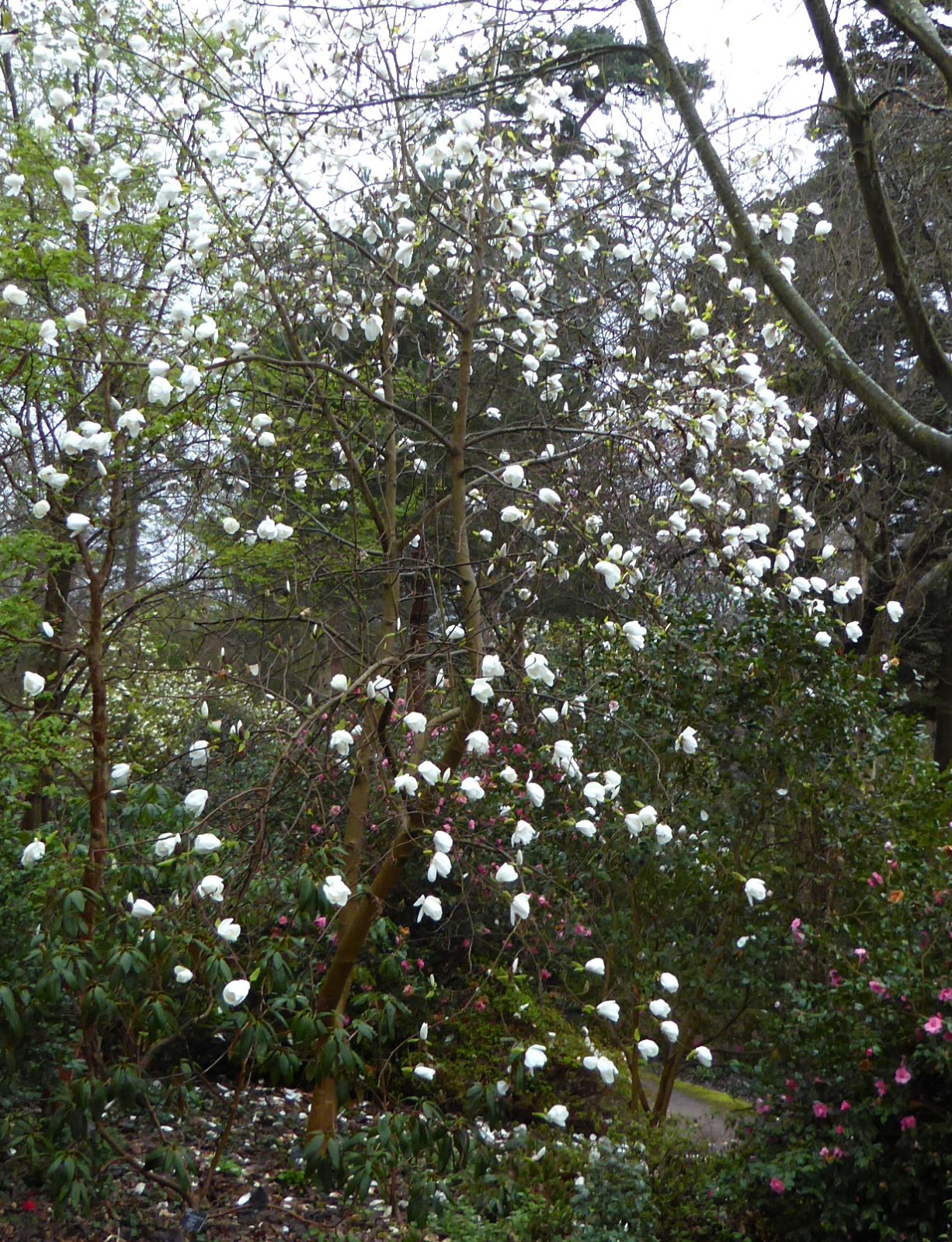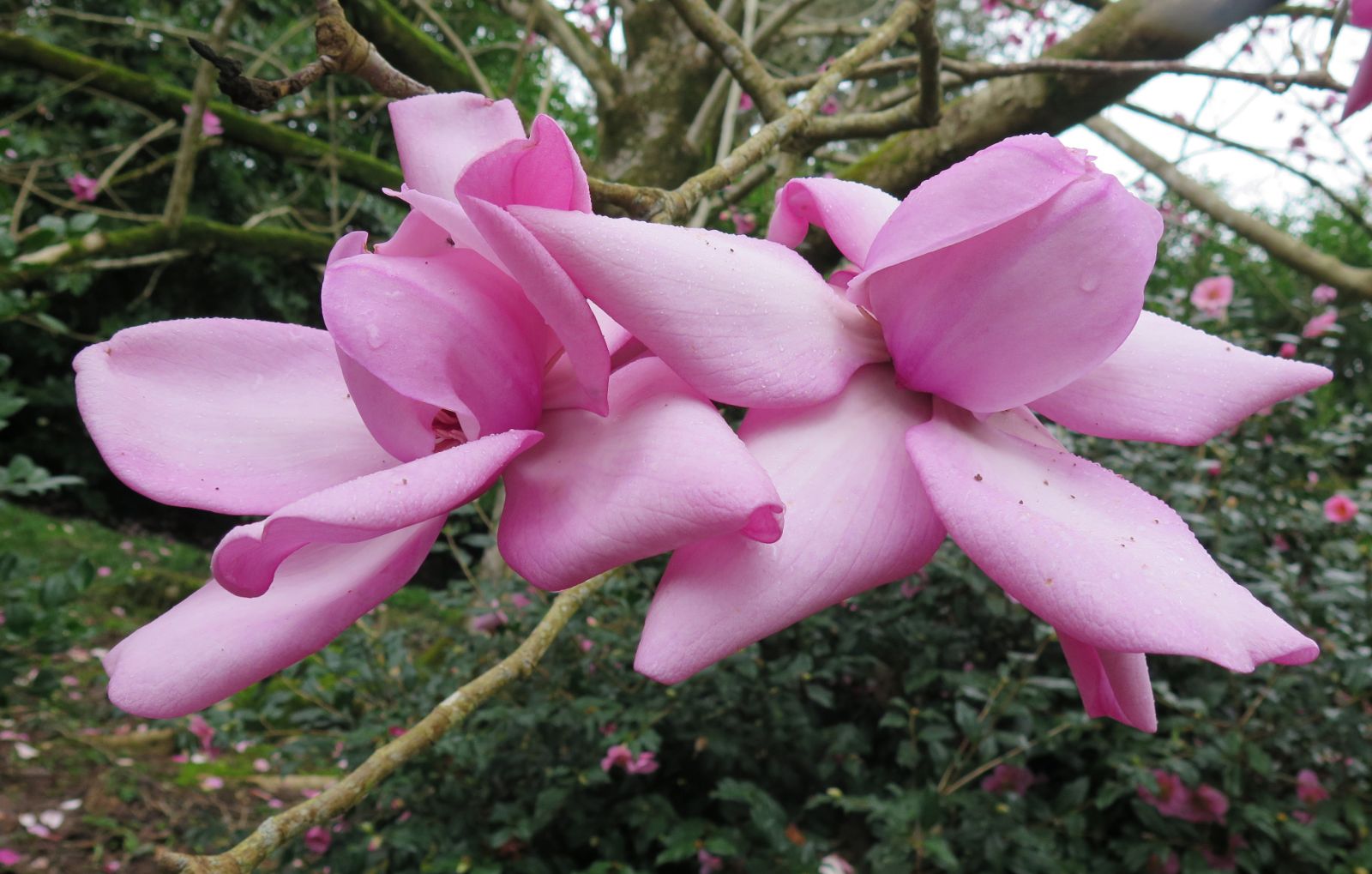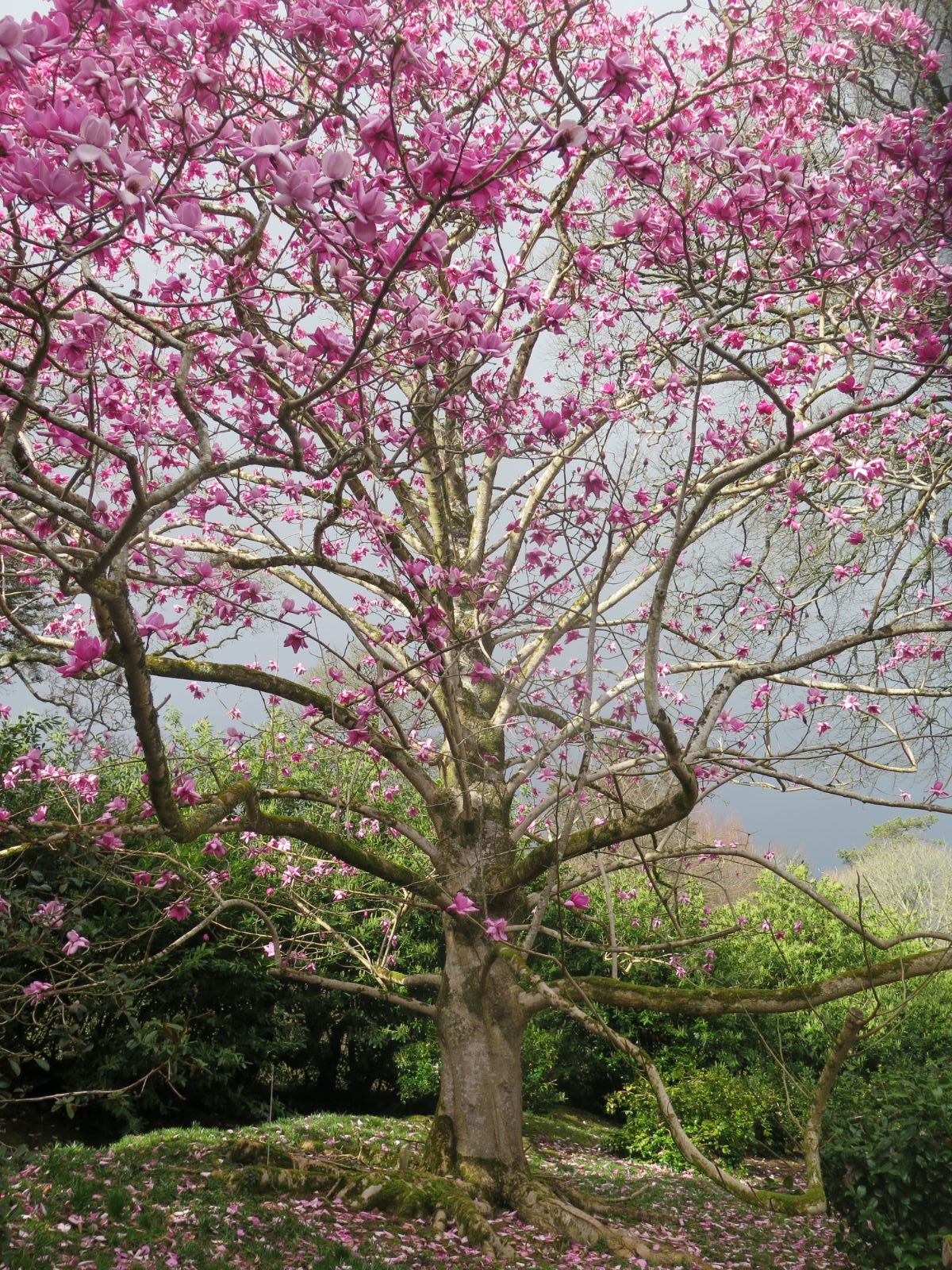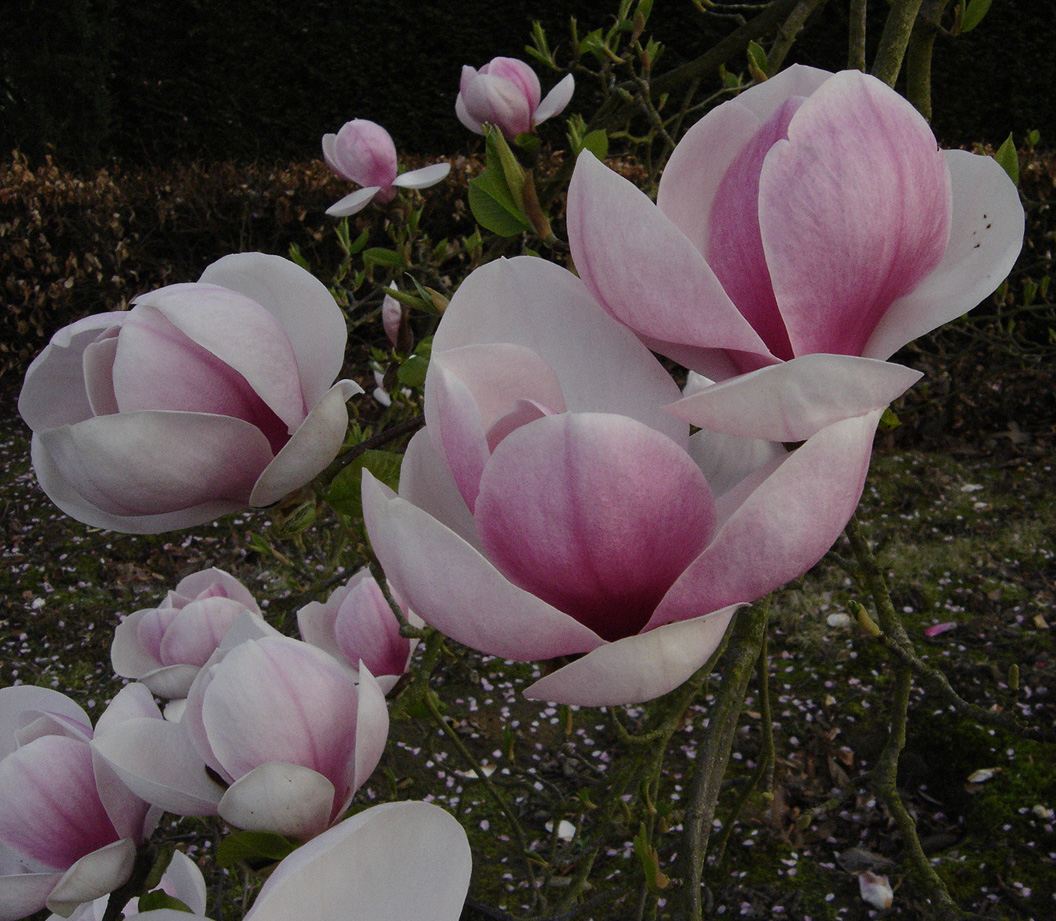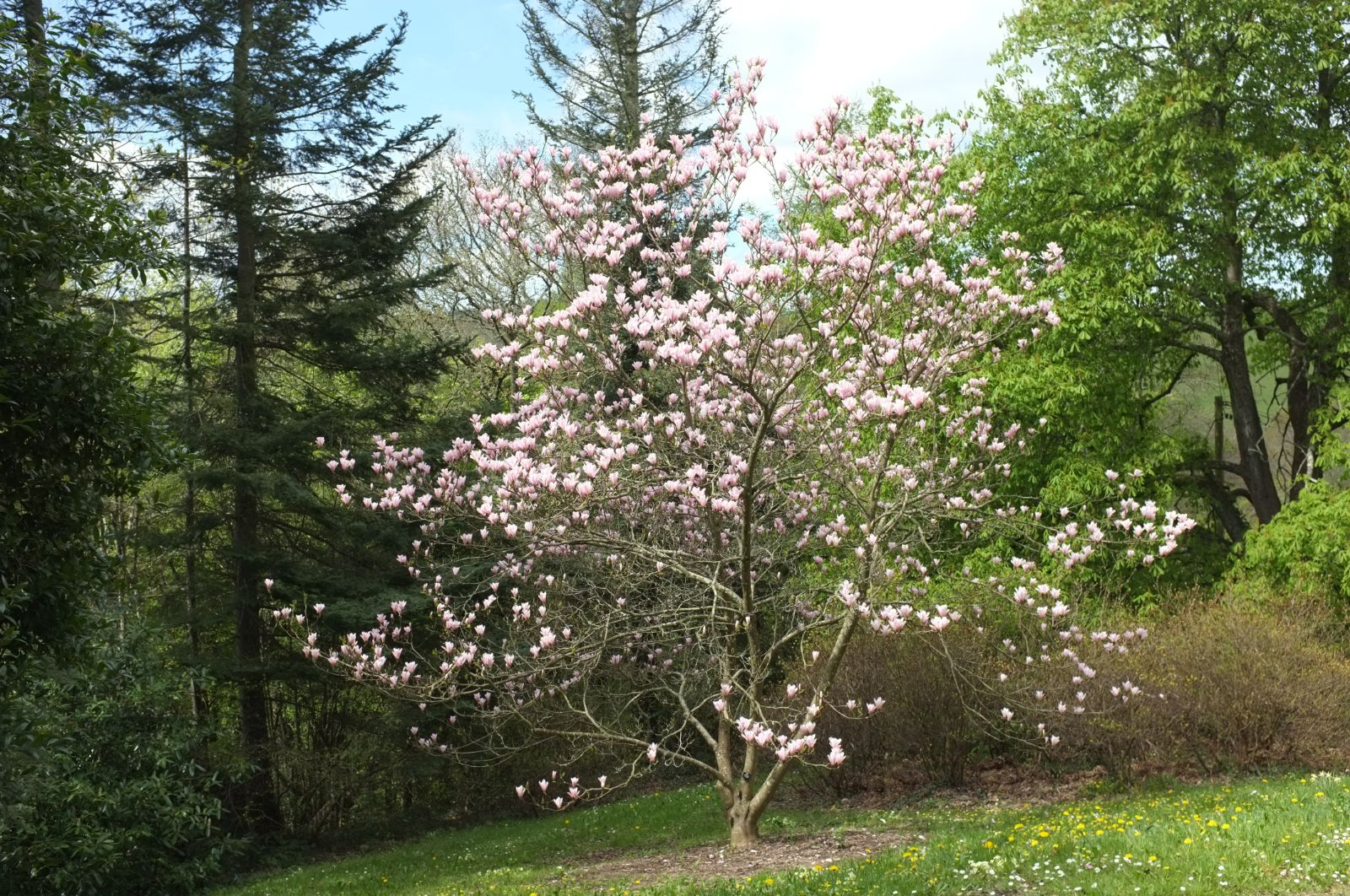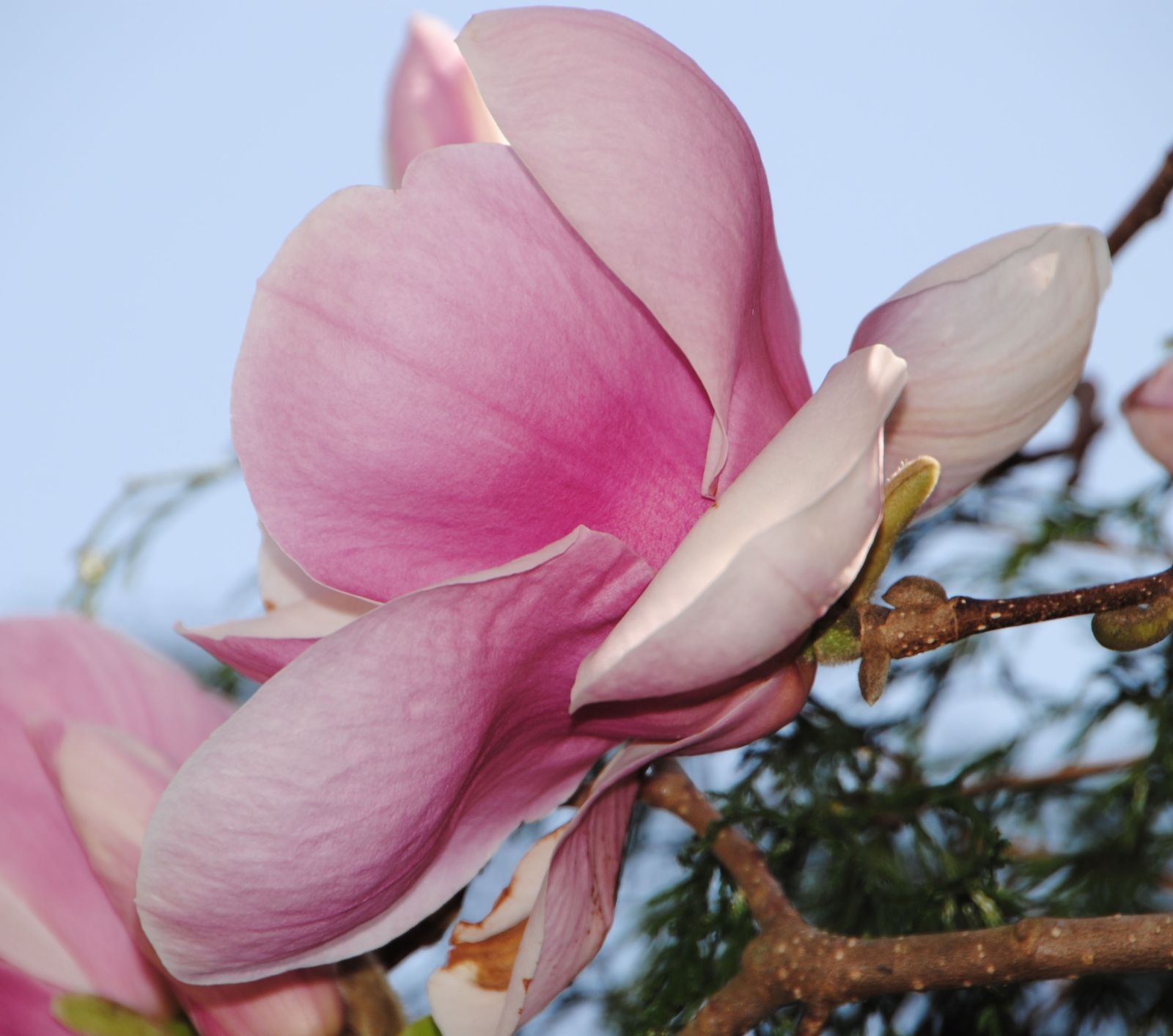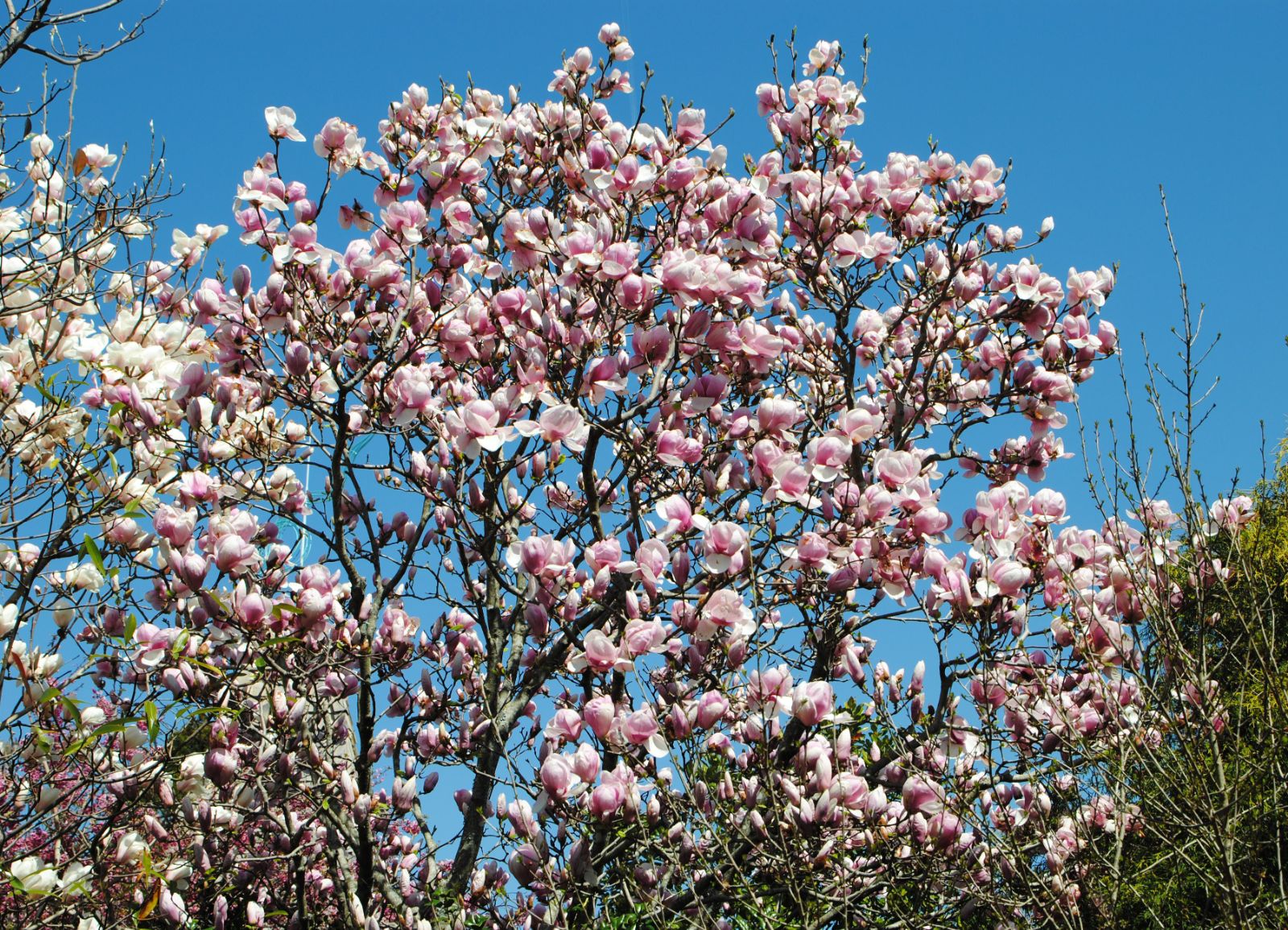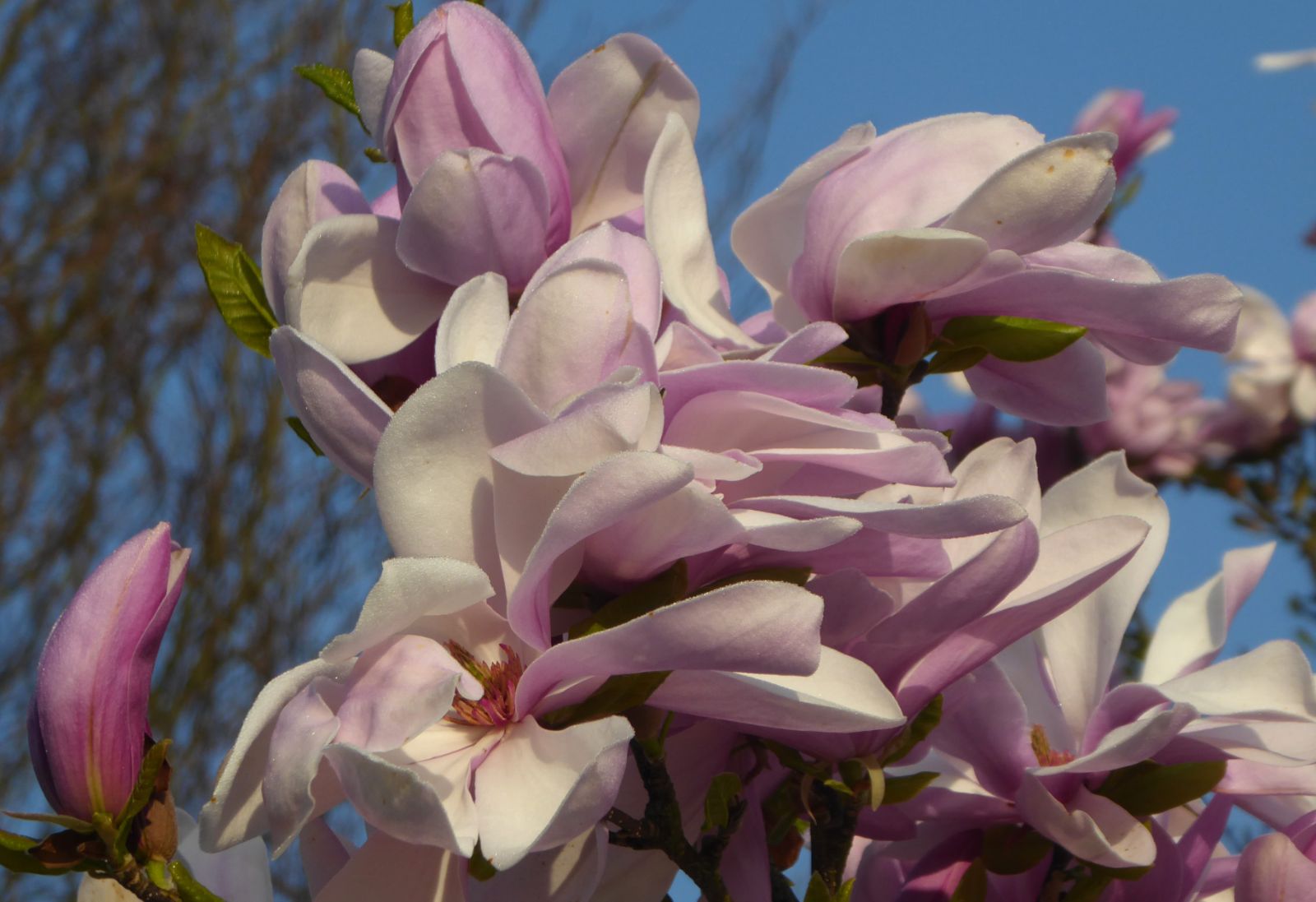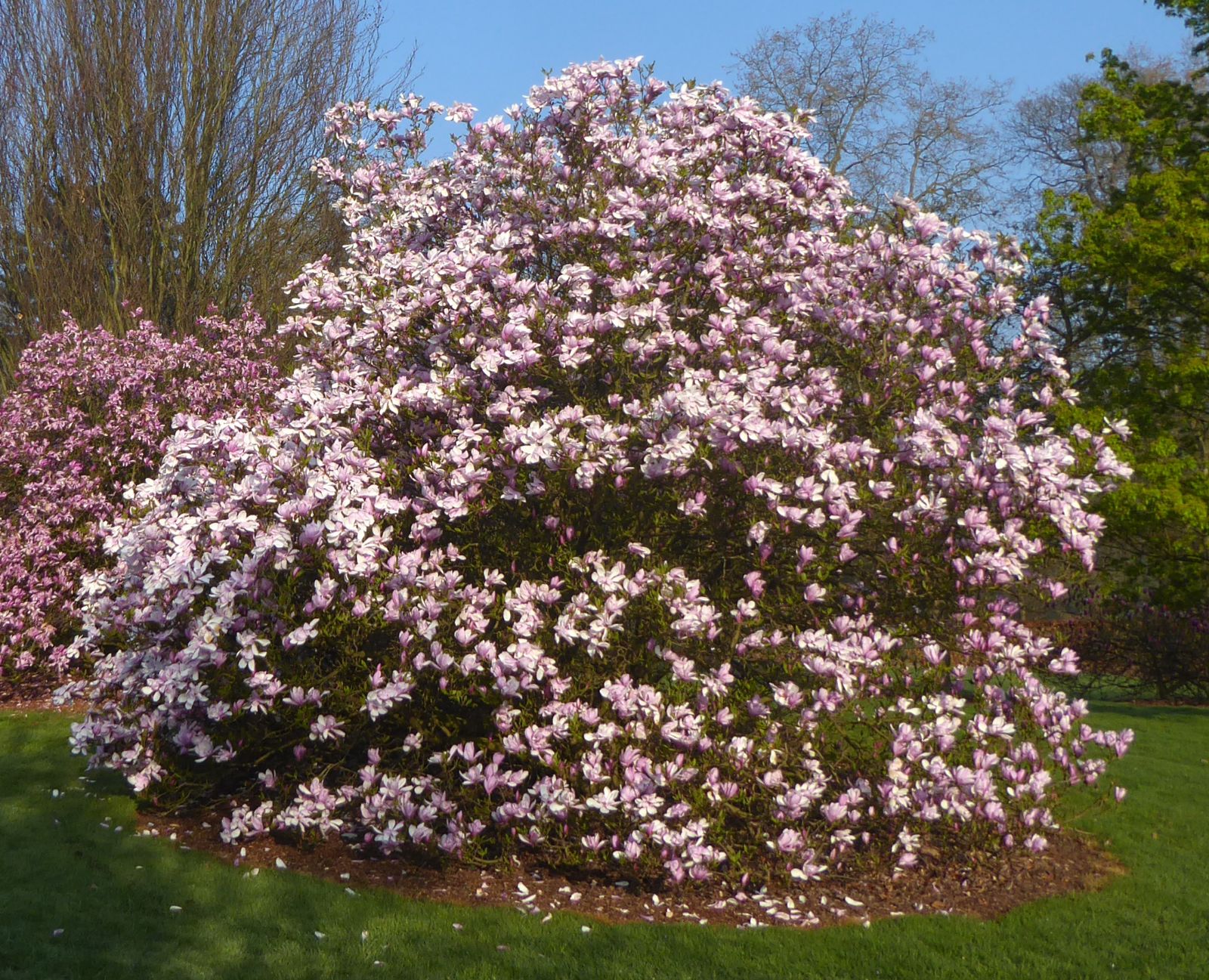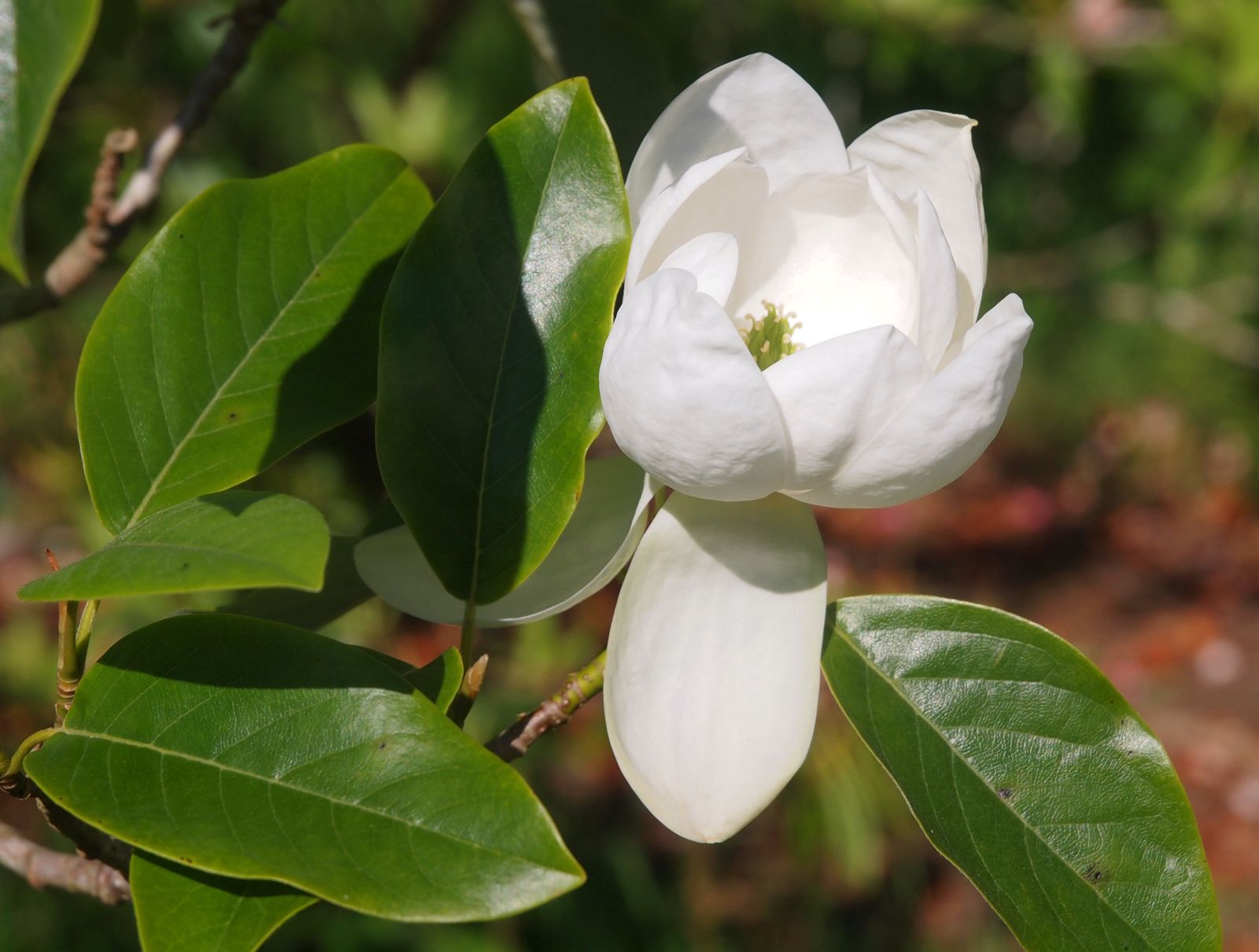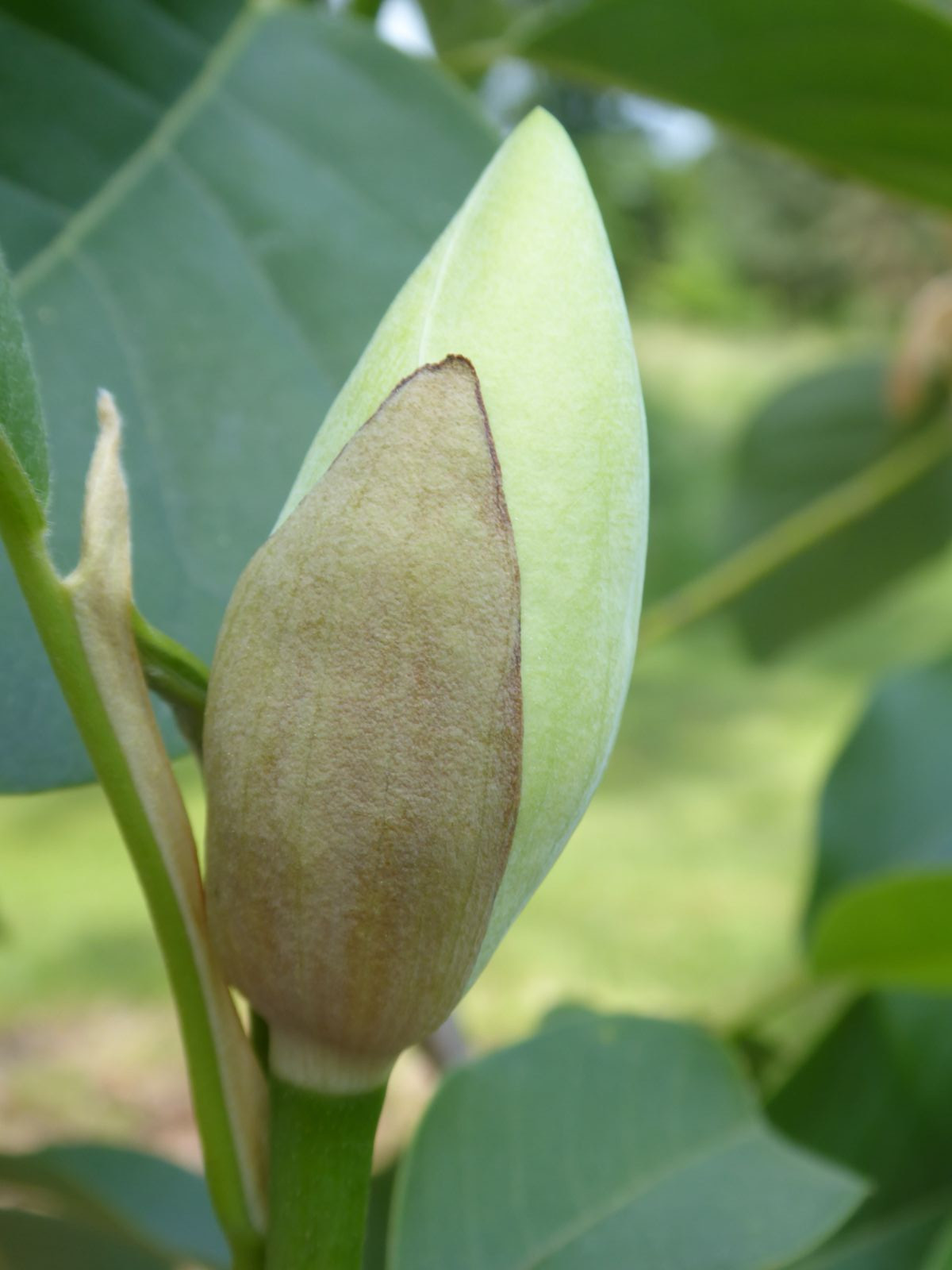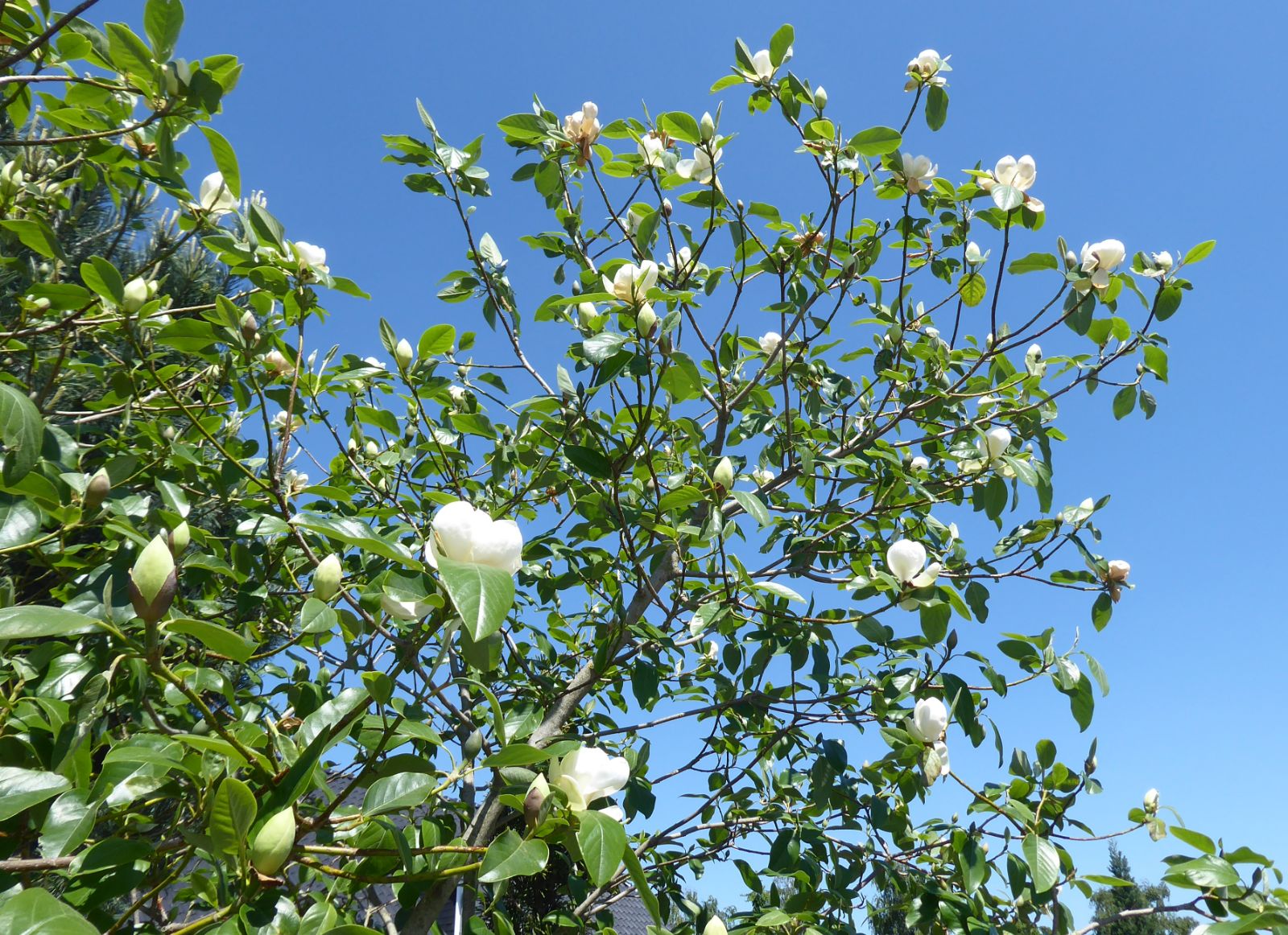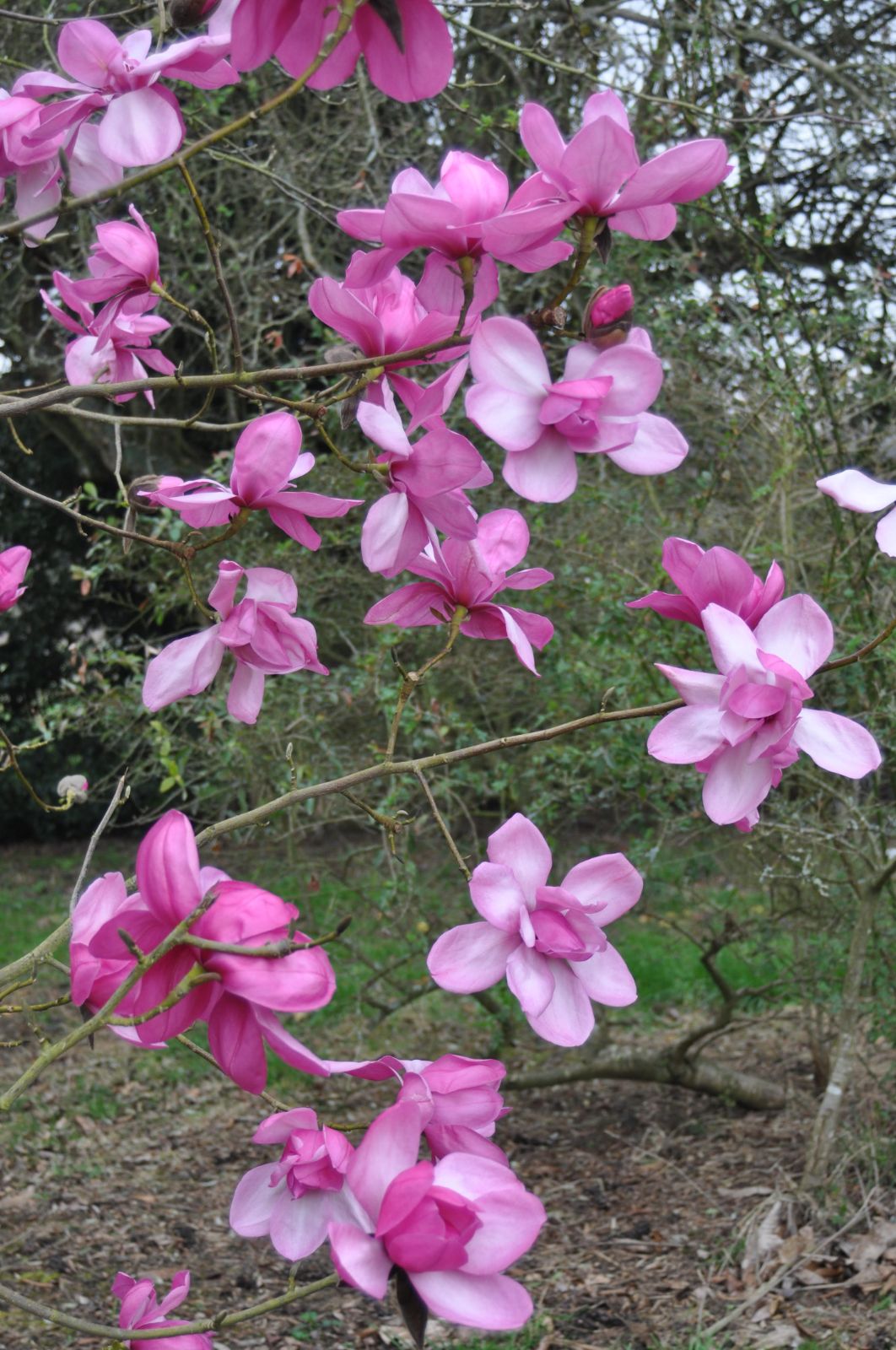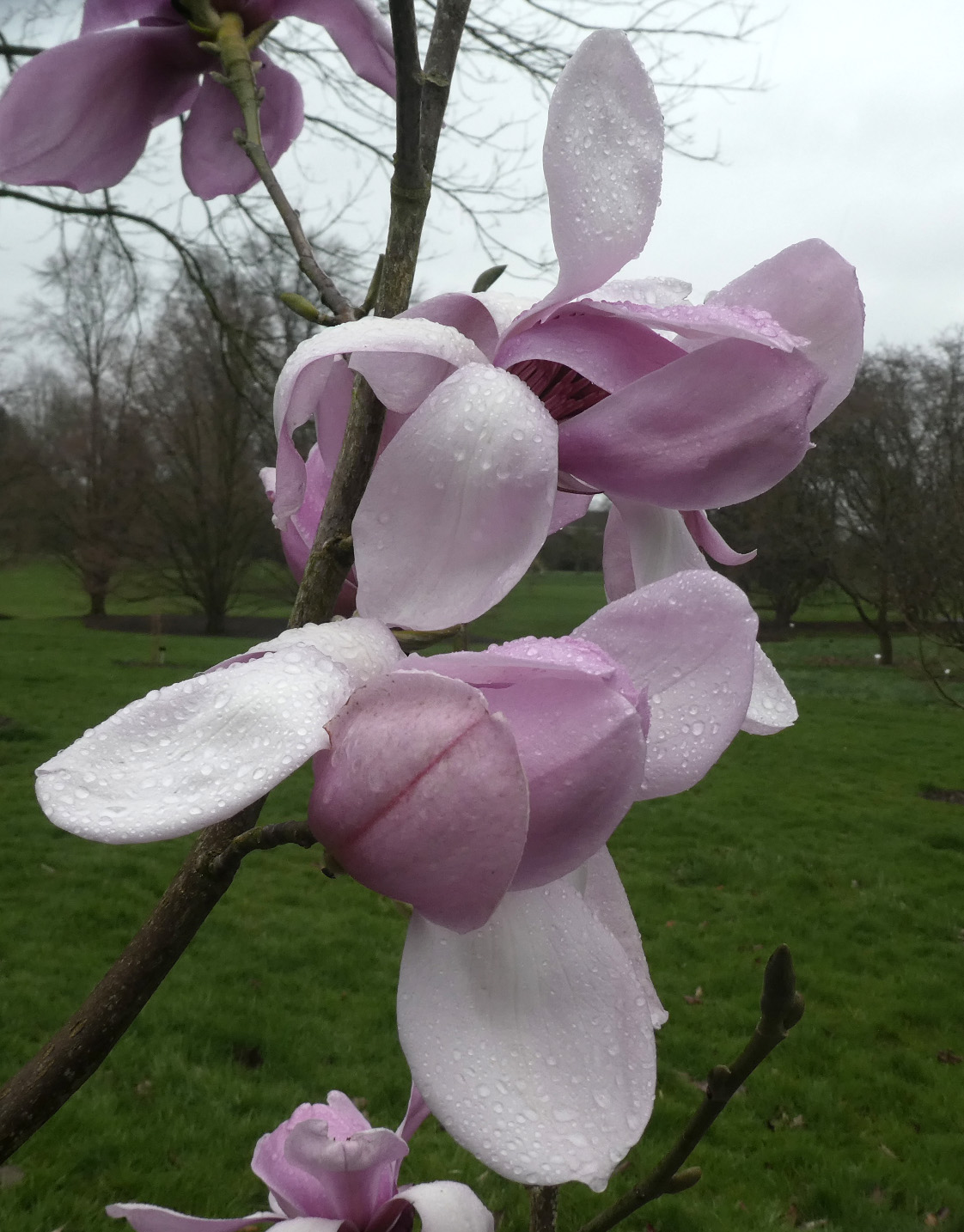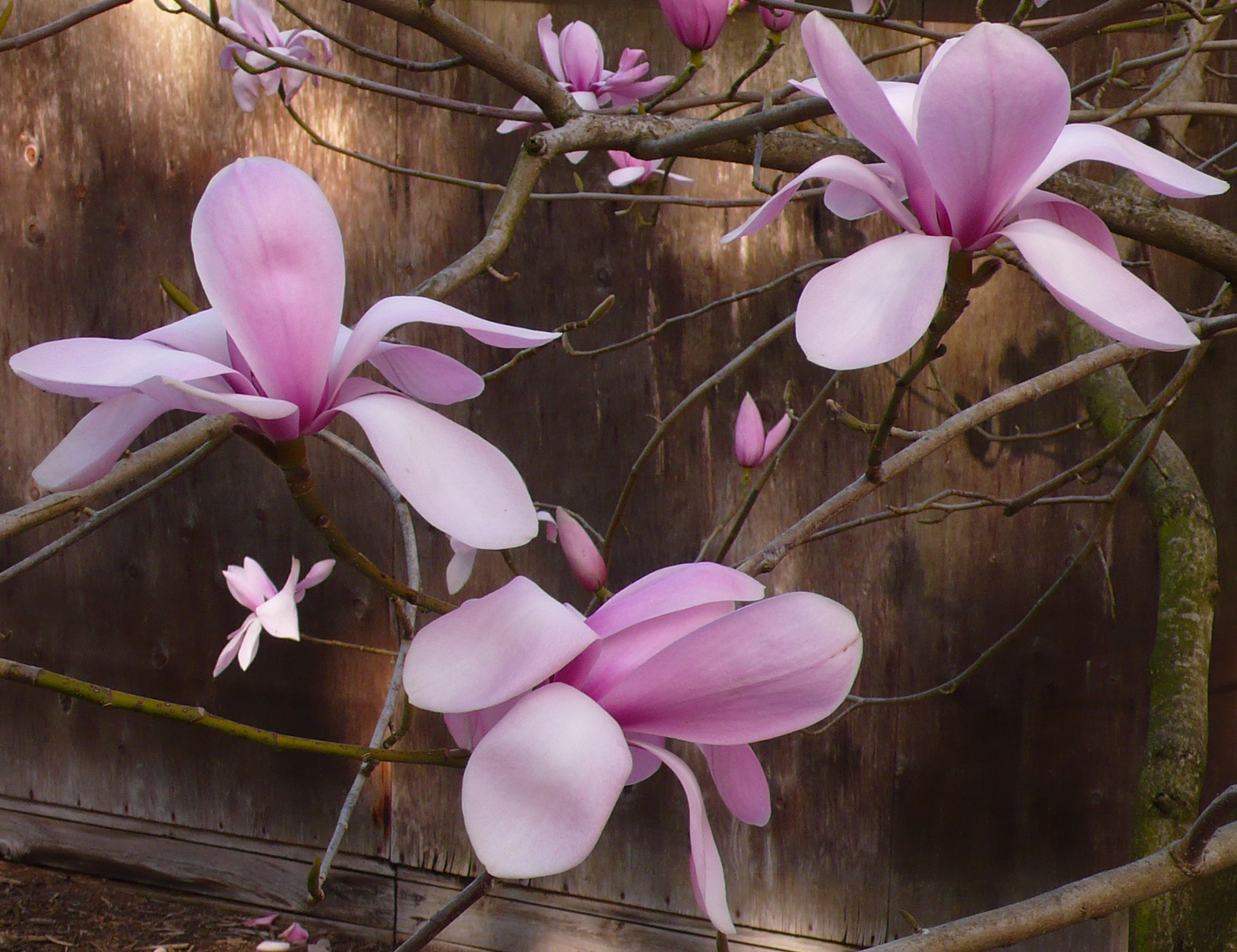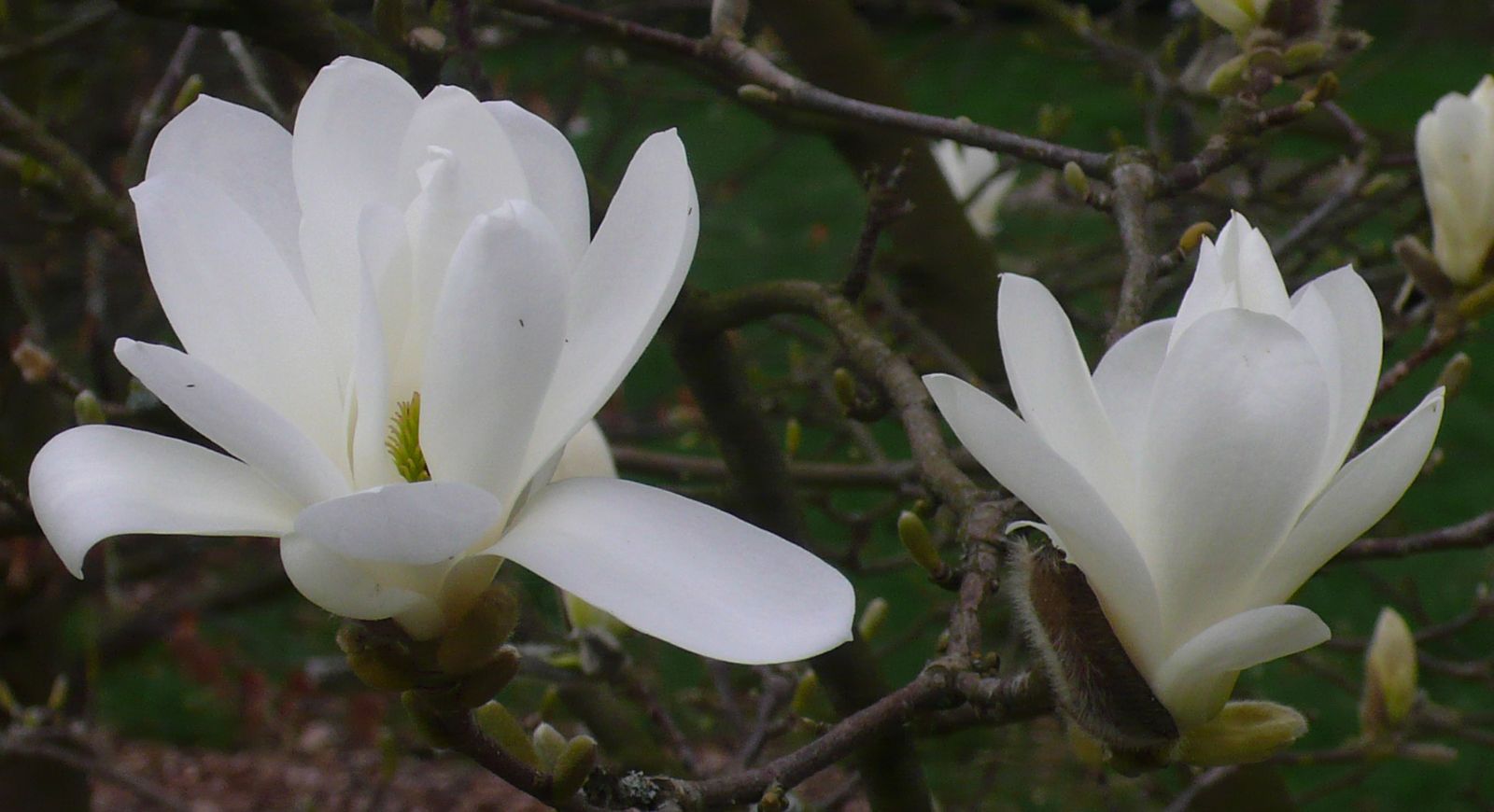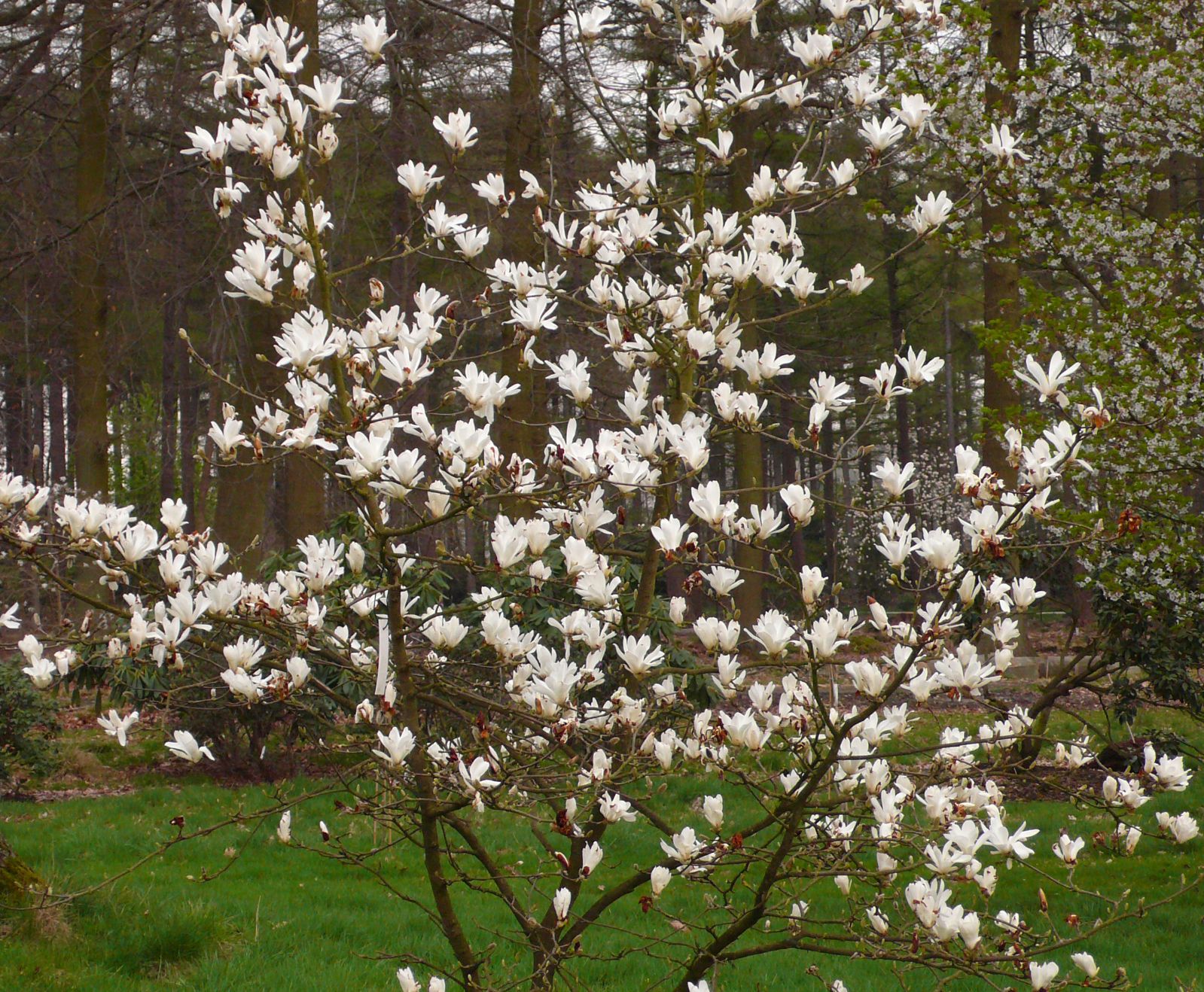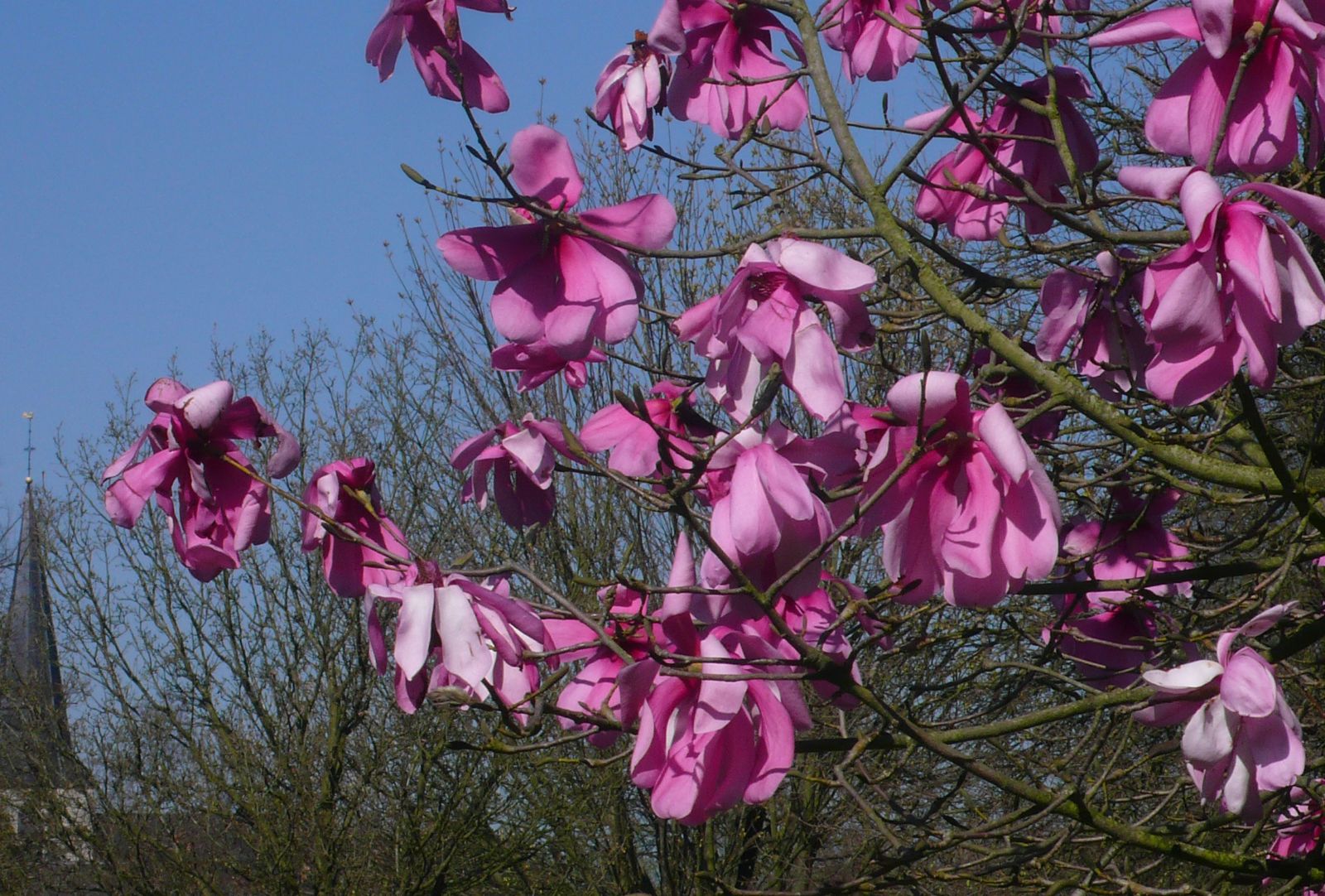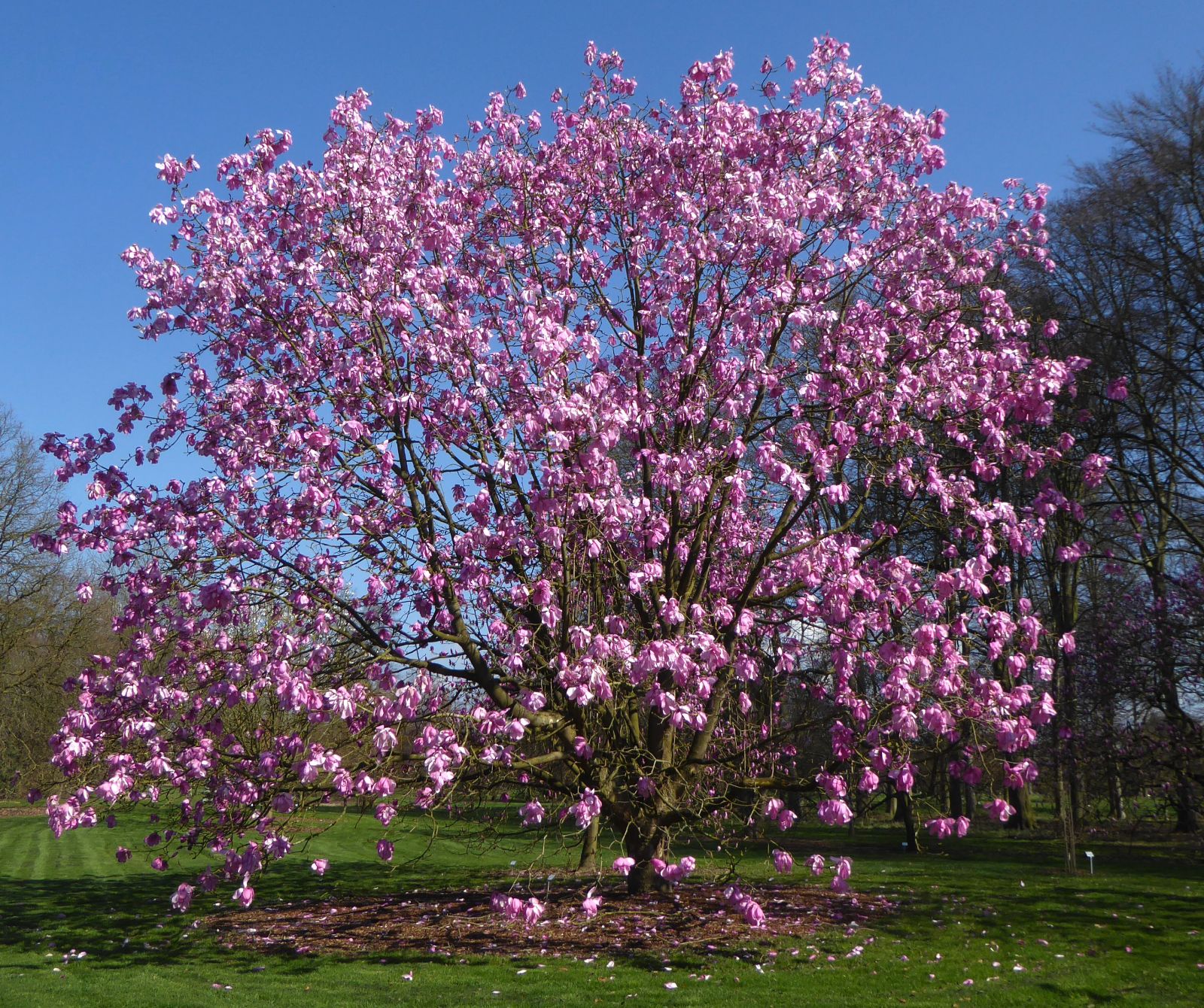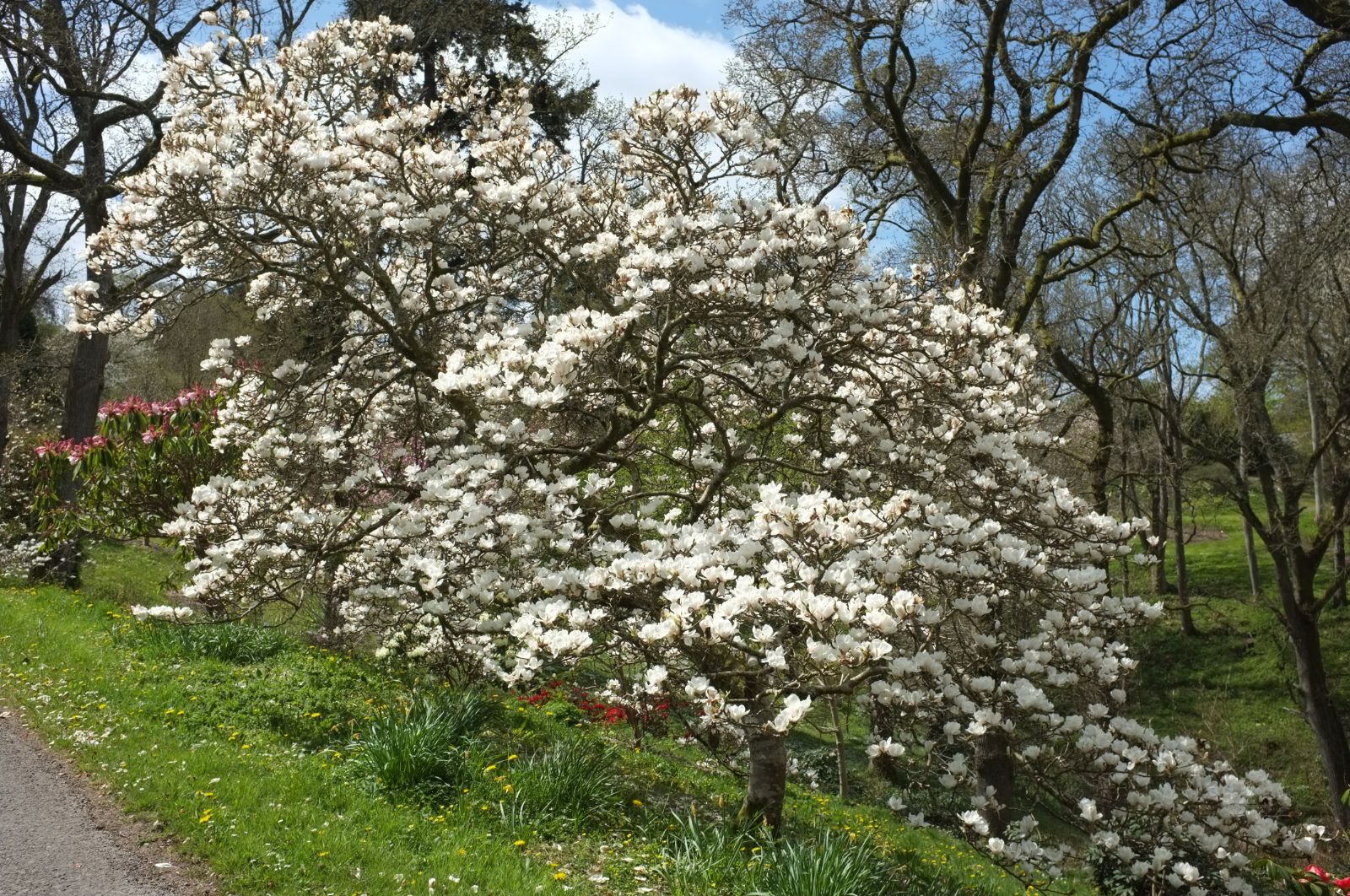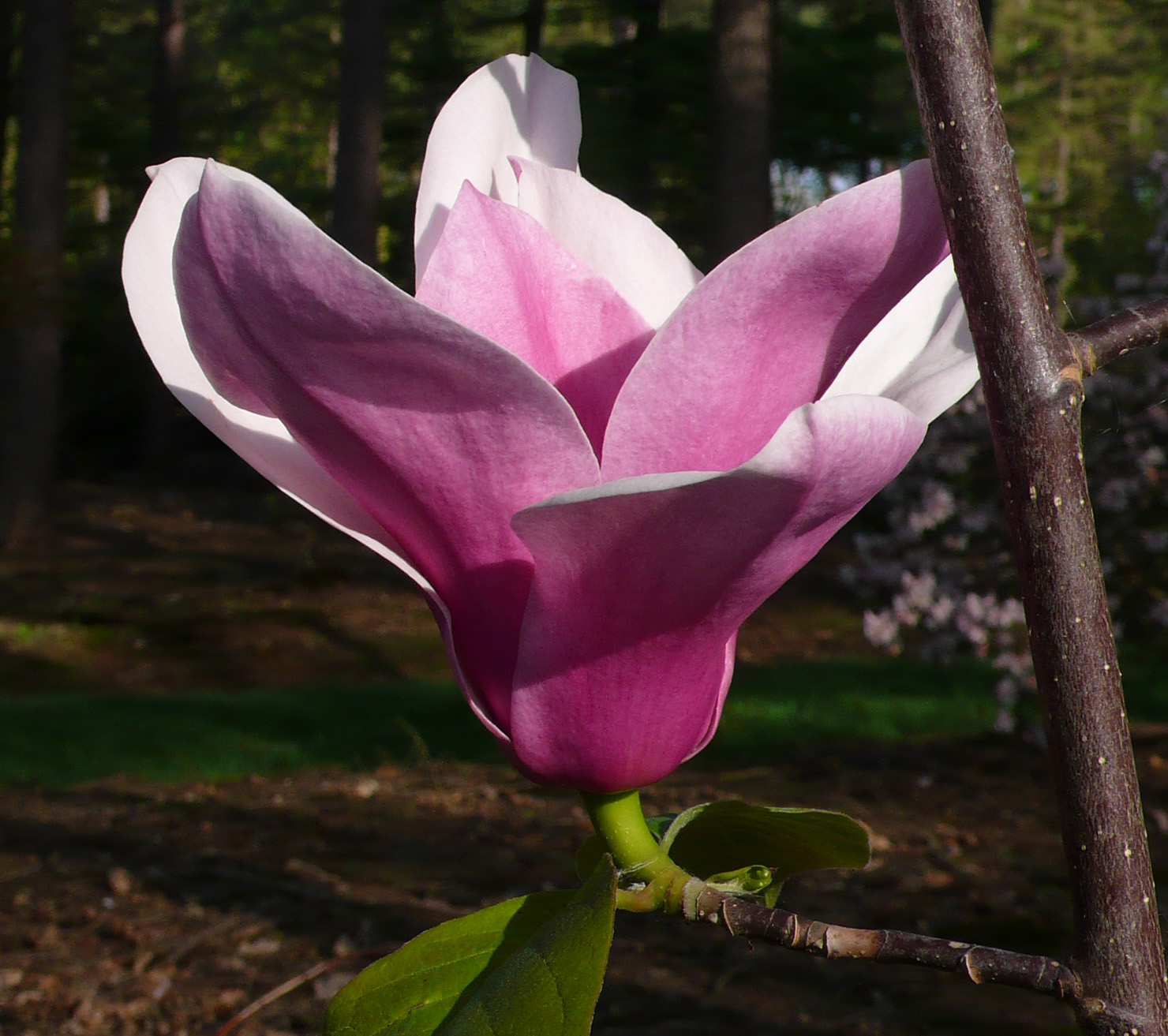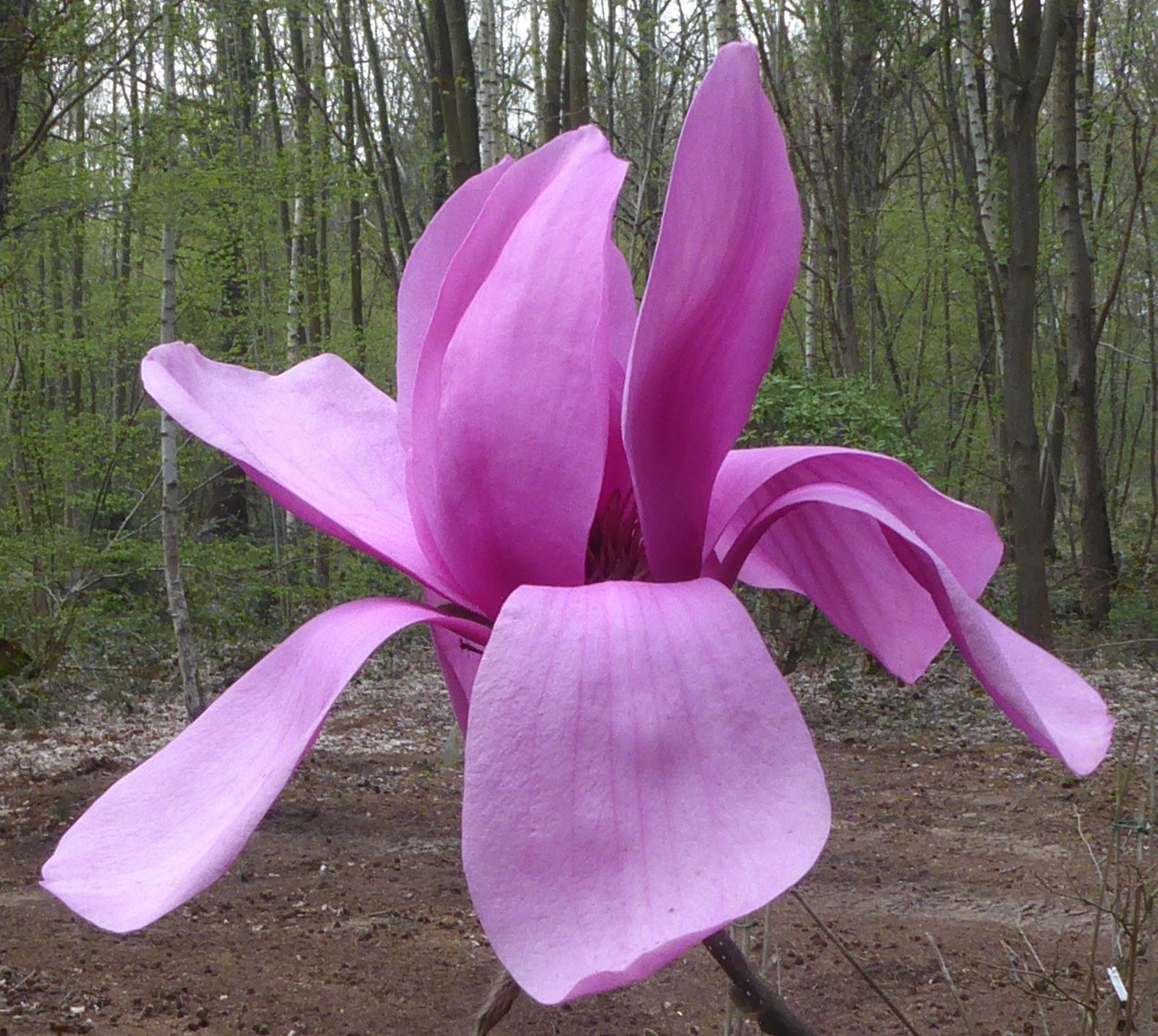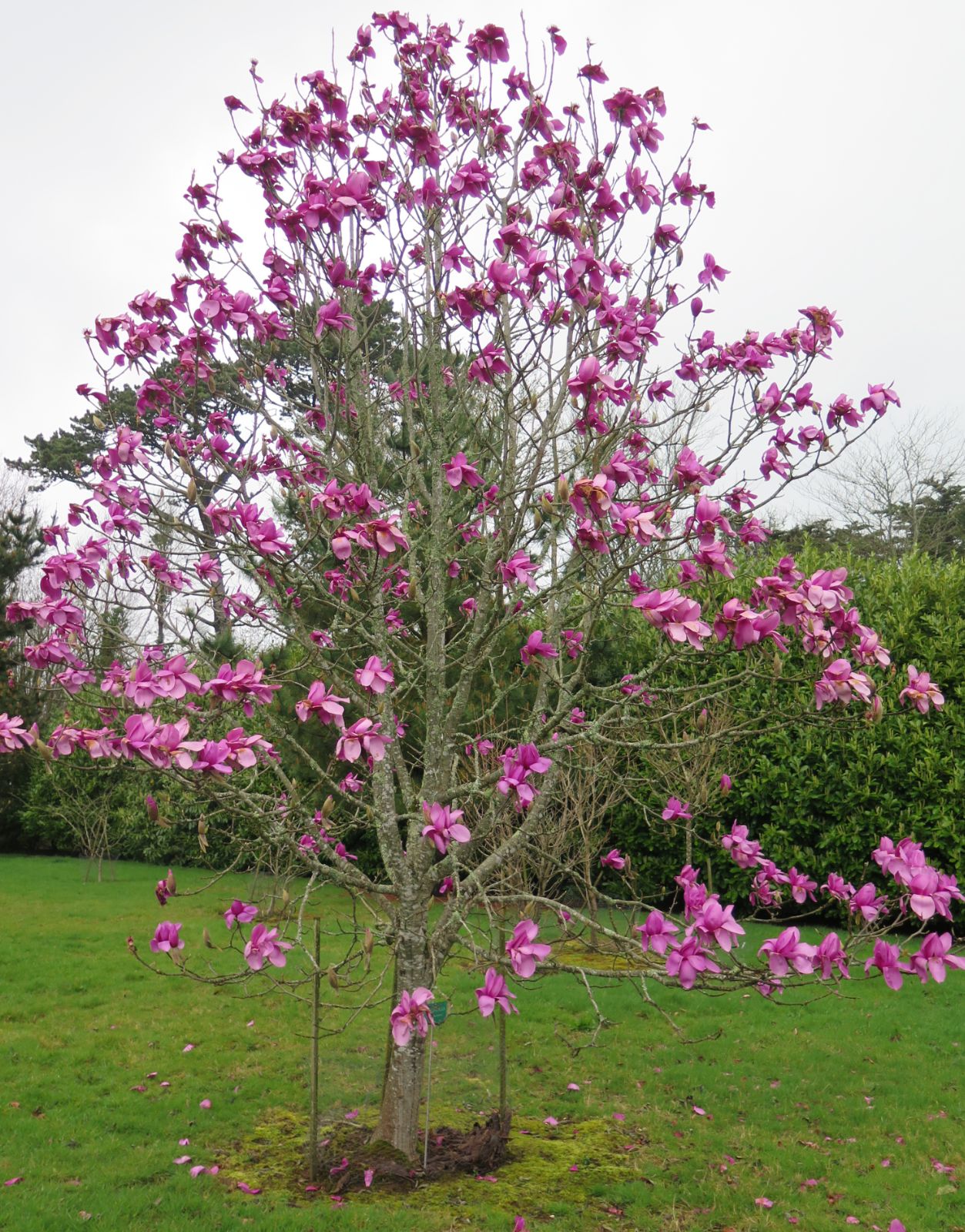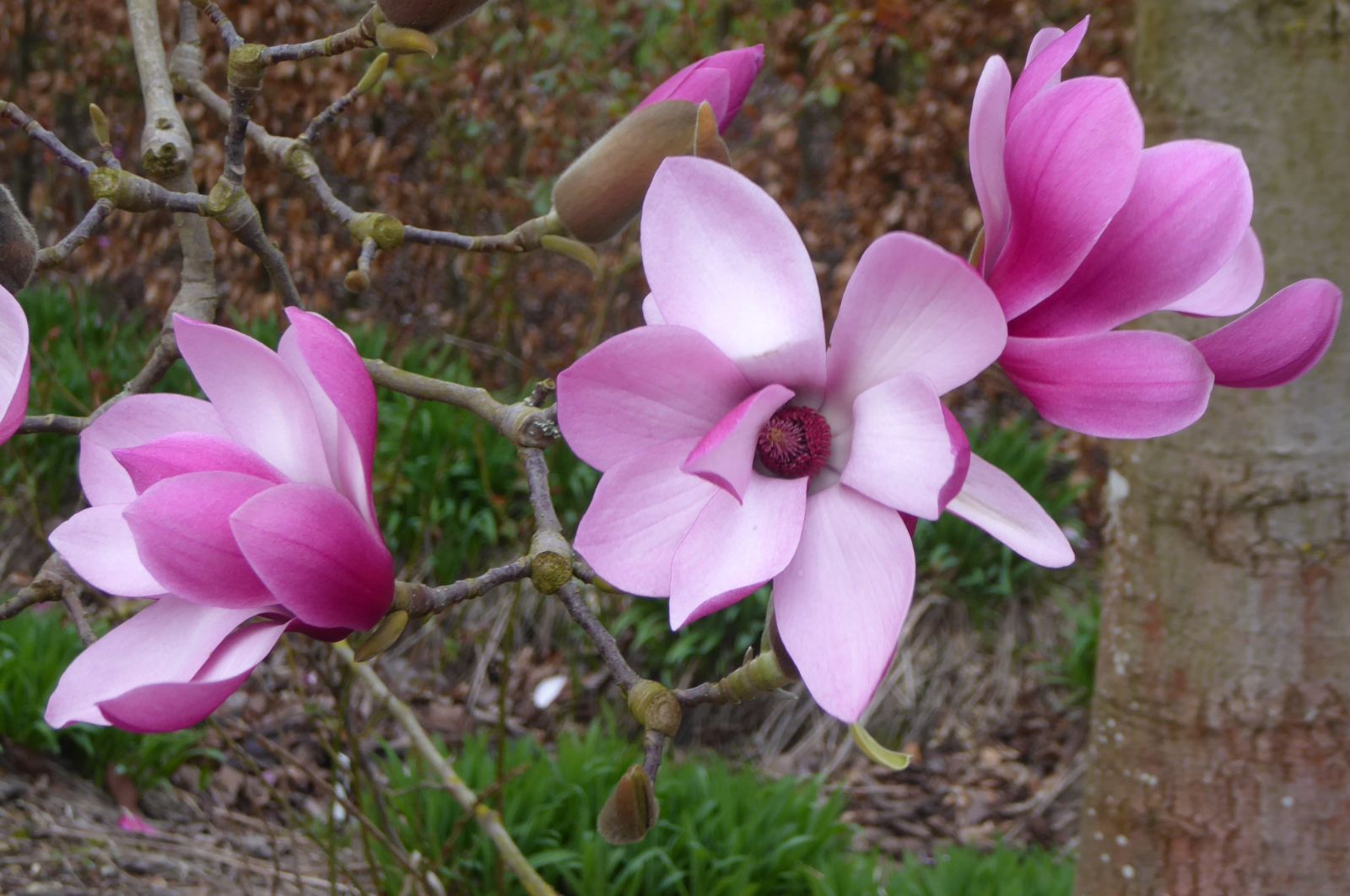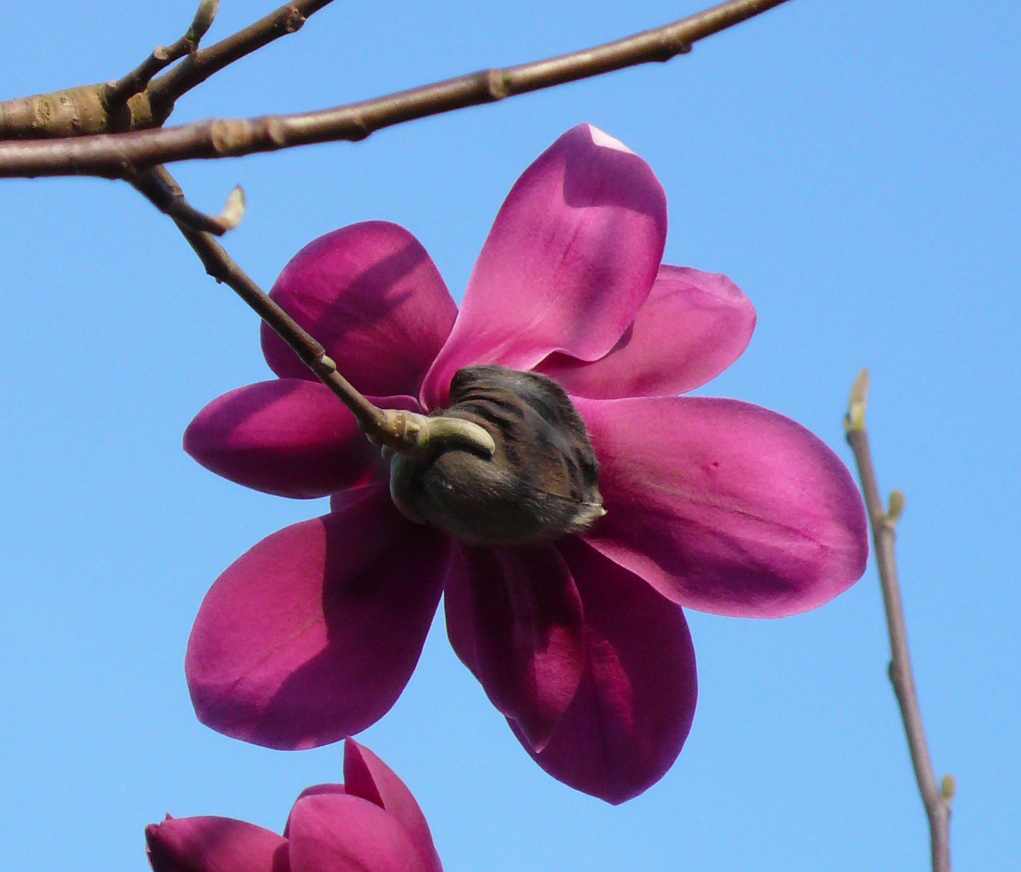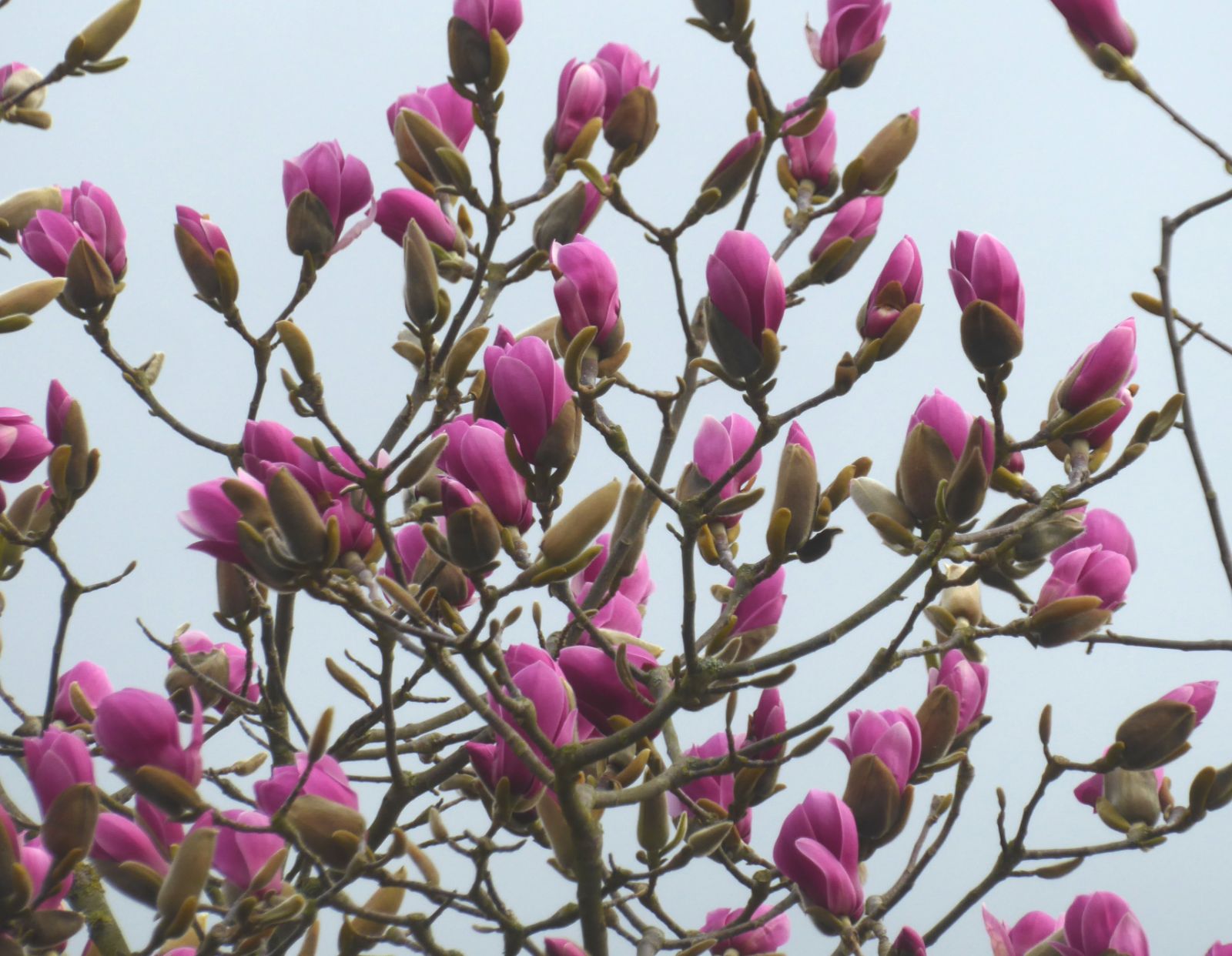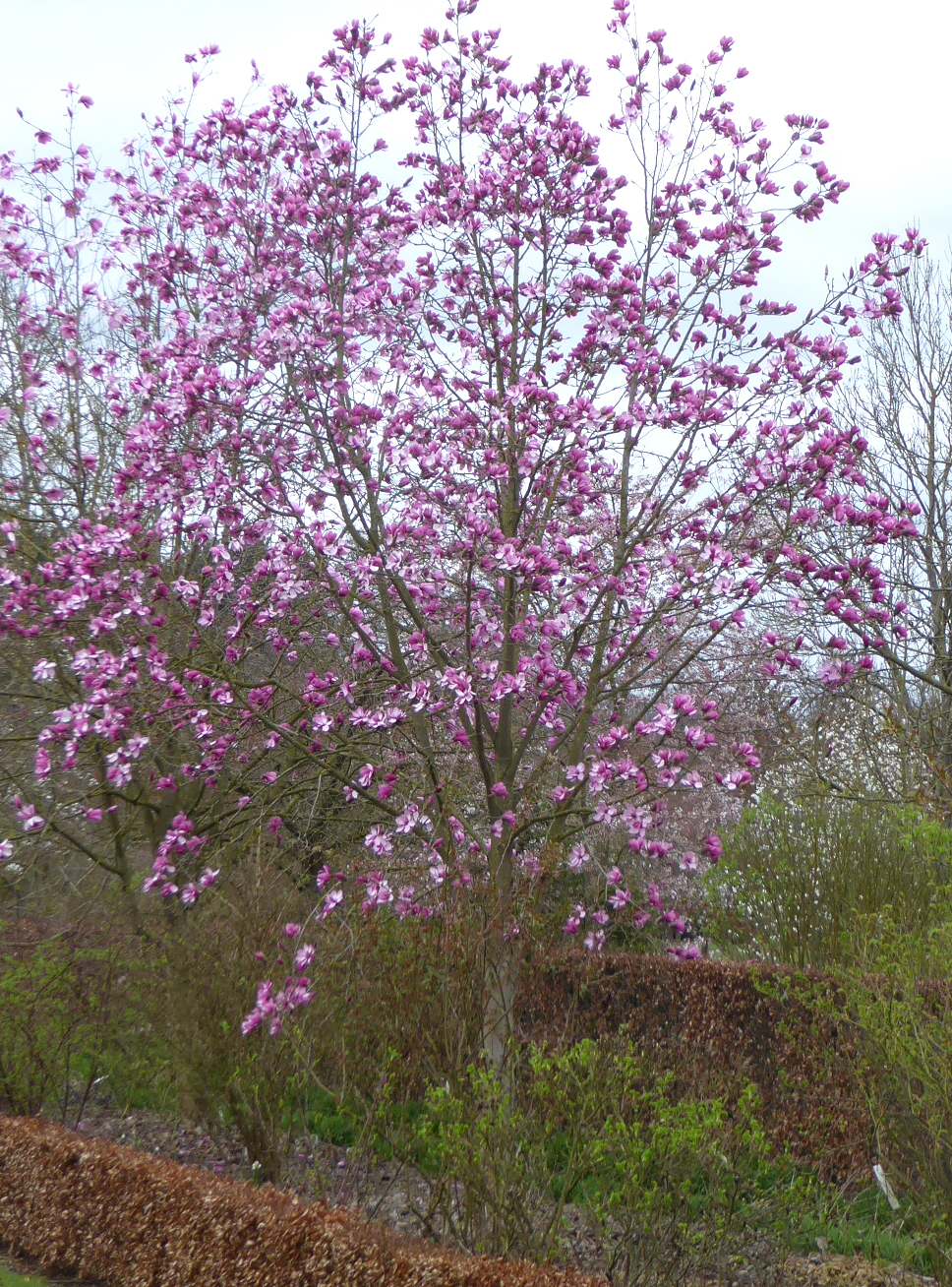Magnolia Cultivars P
Sponsor
Kindly sponsored by
The Roy Overland Charitable Trust

Credits
Julian Sutton (2022)
Recommended citation
Sutton, J. (2022), 'Magnolia Cultivars P' from the website Trees and Shrubs Online (treesandshrubsonline.
Genus
Infraspecifics
- 'Paul Cook'
- 'Peachy'
- 'Pegasus'
- 'Peppermint Stick'
- 'Perry Paige'
- 'Peter Borlase'
- 'Peter Dummer'
- 'Peter Smithers'
- 'Peter Veitch'
- 'Phelan Bright'
- 'Philip Tregunna'
- 'Philo'
- 'Pickard's Garnet'
- 'Pickard's Opal'
- 'Pickard's Ruby'
- 'Pickard's Schmetterling'
- 'Pickard's Snow Queen'
- 'Pickard's Stardust'
- 'Pickard's Sundew'
- 'Picture'
- 'Pink Flush'
- 'Pink Goblet'
- 'Pink Parchment'
- 'Pink Royalty'
- 'Pinkie'
- 'Porcelain Dove'
- 'Powder Puff'
- 'Premier Cru'
- 'Pride of Norway'
- 'Princess Margaret'
- 'Pristine'
- 'Pseudokobus'
- 'Purple Breeze'
- 'Purple Eye'
- 'Purple Globe'
- 'Purple Queen'
- 'Purple Sensation'
- 'Purple Star'
Other taxa in genus
- Magnolia acuminata
- Magnolia × alba
- Magnolia amabilis
- Magnolia amoena
- Magnolia aromatica
- Magnolia biondii
- Magnolia × brooklynensis
- Magnolia campbellii
- Magnolia cathcartii
- Magnolia cavaleriei
- Magnolia caveana
- Magnolia champaca
- Magnolia changhungtana
- Magnolia chapensis
- Magnolia compressa
- Magnolia conifera
- Magnolia Cultivars A
- Magnolia Cultivars B
- Magnolia Cultivars C
- Magnolia Cultivars D
- Magnolia Cultivars E
- Magnolia Cultivars F
- Magnolia Cultivars G
- Magnolia Cultivars H–I
- Magnolia Cultivars J
- Magnolia Cultivars K
- Magnolia Cultivars L
- Magnolia Cultivars M
- Magnolia Cultivars N–O
- Magnolia Cultivars Q–R
- Magnolia Cultivars S
- Magnolia Cultivars T
- Magnolia Cultivars U–V
- Magnolia Cultivars W–Z
- Magnolia cylindrica
- Magnolia dandyi
- Magnolia dawsoniana
- Magnolia de Vos and Kosar hybrids
- Magnolia decidua
- Magnolia delavayi
- Magnolia denudata
- Magnolia doltsopa
- Magnolia duclouxii
- Magnolia ernestii
- Magnolia figo
- Magnolia floribunda
- Magnolia × foggii
- Magnolia fordiana
- Magnolia foveolata
- Magnolia fraseri
- Magnolia fulva
- Magnolia globosa
- Magnolia × gotoburgensis
- Magnolia grandiflora
- Magnolia grandis
- Magnolia Gresham hybrids
- Magnolia guangdongensis
- Magnolia hookeri
- Magnolia insignis
- Magnolia Jury hybrids
- Magnolia × kewensis
- Magnolia kobus
- Magnolia kwangtungensis
- Magnolia laevifolia
- Magnolia lanuginosa
- Magnolia leveilleana
- Magnolia liliiflora
- Magnolia × loebneri
- Magnolia lotungensis
- Magnolia macclurei
- Magnolia macrophylla
- Magnolia martini
- Magnolia maudiae
- Magnolia nitida
- Magnolia obovata
- Magnolia officinalis
- Magnolia opipara
- Magnolia × proctoriana
- Magnolia × pruhoniciana
- Magnolia rostrata
- Magnolia salicifolia
- Magnolia sapaensis
- Magnolia sargentiana
- Magnolia sieboldii
- Magnolia sinensis
- Magnolia sinica
- Magnolia sinostellata
- Magnolia × soulangeana
- Magnolia sprengeri
- Magnolia stellata
- Magnolia tamaulipana
- Magnolia × thomsoniana
- Magnolia tripetala
- Magnolia × veitchii
- Magnolia virginiana
- Magnolia × wieseneri
- Magnolia wilsonii
- Magnolia xinganensis
- Magnolia yunnanensis
- Magnolia yuyuanensis
- Magnolia zenii
Our primary references for cultivar information are Jim Gardiner’s (2000) ‘Magnolias: a Gardener’s Guide’ and Matt Lobdell’s (2021) register of cultivars for Magnolia Society International. Further references are cited where relevant. Other important accounts of cultivars include Dorothy Callaway’s (1994) ‘The World of Magnolias’ and (in German) Beet Heerdegen and Reto Eisenhut’s (2020) ‘Magnolien und Tulpenbäume: Magnoliaceae’. Magnolia Society International’s journal ‘Magnolia’ is an ongoing trove of information.
'Paul Cook'
(M. × soulangeana 'Lennei' seedling) × M. sprengeri 'Diva'
RHS Hardiness Rating: H6
USDA Hardiness Zone: 6-9
Flowers precocious, rather floppy and opening 20–28 cm across; tepals 6–9, lavender pink outside, white within. An upright, vigorous, small to medium tree more robust than either parent, registered 1975 by Frank Galyon, TN. Highly rated by Philippe de Spoelberch, Belgium (pers. comm. 2021).
'Peachy'
M. acuminata 'Fertile Myrtle' × M. sprengeri 'Diva'
Flowers with the opening foliage, orange-pink outside, creamy white inside, fragrant; tepals 9, ~13 × 5 cm, upright at first, then flopping. The colour suggests a ‘mottled peach’ (R. Figlar in Callaway 1994). Fast growing, upright, small to medium tree. From a Phil Savage cross of 1979, named 1994 by Dick Figlar; ‘Apricot Brandy’ shares its parentage. Highly rated by Philippe de Spoelberch, Belgium (pers. comm. 2021).
'Pegasus'
M. cylindrica × probably M. denudata
Awards
AGM
RHS Hardiness Rating: H6
USDA Hardiness Zone: 5-9
Flowers precocious and profuse, erect, vase-shaped at first, opening wide later; 6 petaloid tepals white, suffused purple-pink towards base, ~10 cm with reflexed margins; 3 outer tepals small and sepaloid. A large shrub or small to medium multistemmed tree, developing a spreading crown with age. Raised by Mary Henry, PA, from the 1930s distribution of M. cylindrica seed by Lushan Botanical Garden, which later proved to have been outcrossed, probably with M. denudata (see under M. cylindrica). It was distributed in Europe (as M. cylindrica) initially by Hillier Nurseries who had received scion wood, but Hilliers also distributed many seedlings from it. A beautiful plant, it was eventually named by Roy Lancaster from a tree at Trengwainton, Cornwall, which originated at Hilliers (Edwards & Marshall 2019).
'Peppermint Stick'
(M. × veitchii) × M. liliiflora
RHS Hardiness Rating: H5
USDA Hardiness Zone: 7-9
Flowers precocious, opening from distinctive narrow, pointed buds to 11 cm long; inner tepals held erect on opening, while the outer ones reflex almost to the horizontal; tepals 9, white flushed pink at the base. An upright small to medium tree, one of the original Gresham hybrids (Edwards & Marshall 2019).
'Perry Paige'
See Magnolia virginiana ‘Perry Paige’.
'Peter Borlase'
See Magnolia campbellii ‘Peter Borlase’.
'Peter Dummer'
M. 'Pegasus' × M. campbellii 'Darjeeling'
RHS Hardiness Rating: H5
USDA Hardiness Zone: 7-9
Flowers precocious, erect and tulip-shaped, fragrant; tepals clean pink outside (no hint of purple), deeper at the base, creamy white inside. A medium tree, sometimes multistemmed, selected at RHS Garden Wisley by Jim Gardiner, as one of a number of seedlings from a deliberate cross made in the 1980s at Hillier Nurseries by Peter Dummer. Williams, Gardiner & Gallagher (2016) include it in their selection of up-and-coming magnolias. ‘Janet’ shares the same parents.
'Peter Smithers'
(M. × veitchii) × (M. × soulangeana 'Rustica Rubra')
RHS Hardiness Rating: H5
USDA Hardiness Zone: 7-9
Flowers precocious, opening wide to 25 cm across; tepals 9, broad, pink outside, white inside; stamens and gynoecium reddish. A fast growing, large leaved, small to medium tree. A Gresham hybrid selected before 1984 by Ken Durio, LA, named for the British-Swiss intelligence officer and politician turned gardener, a noted magnolia enthusiast (Fogg & Del Tredici 1984).
'Peter Veitch'
See Magnolia × veitchii ‘Peter Veitch’.
'Phelan Bright'
(M. × veitchii) × (M. × soulangeana 'Lennei Alba')
RHS Hardiness Rating: H5
USDA Hardiness Zone: 7-9
Flowers precocious but later than most Gresham hybrids, goblet-shaped and very large, opening to as much as 35 cm across, pure white with 12 tepals. An upright, later spreading, medium tree, a Gresham hybrid selected 1992 by Tina Durio, LA. The wonderfully named Phelan Bright was one-time secretary of Magnolia Society International.
'Philip Tregunna'
M. sargentiana var. robusta × M. campbellii
RHS Hardiness Rating: H5
USDA Hardiness Zone: 7-9
Flowers precocious (March in SW England), ~19 cm across; tepals 11–12, broad, purple-pink outside, the paler pink inside visible as flowers open fully. A vigorous medium tree, with large leaves resembling those of M. campbellii. A chance hybrid raised at Caerhays Castle, Cornwall in 1960, named for the then head gardener. The original measured 16 m × 252 cm in 2016 (The Tree Register 2022).
'Philo'
See Magnolia acuminata ‘Philo’.
'Pickard's Garnet'
See Magnolia × soulangeana ‘Pickard’s Garnet’.
'Pickard's Opal'
See Magnolia × soulangeana ‘Pickard’s Opal’.
'Pickard's Ruby'
See Magnolia × soulangeana ‘Pickard’s Ruby’.
'Pickard's Schmetterling'
See Magnolia × soulangeana ‘Pickard’s Schmetterling’.
'Pickard's Snow Queen'
See Magnolia × soulangeana ‘Pickard’s Snow Queen’.
'Pickard's Stardust'
M. kobus × unknown
RHS Hardiness Rating: H6
USDA Hardiness Zone: 6-9
Flowers precocious, April (S England), successionally over several weeks, fragrant; tepals 9, 6 inner tepals erect, white, flushed pink at the base, outer 3 reflexed. A floriferous, multi-stemmed medium shrub with ascending branches. An open-pollinated seedling raised by Amos Pickard, Kent, before 1984. Gardiner (2000) felt it worthy of much wider attention.
'Pickard's Sundew'
Synonyms / alternative names
Magnolia 'Sundew'
Magnolia × soulangeana 'Pickard's Sundew'
Flowers goblet-shaped, to 25 cm across; tepals creamy white, flushed pink at the base, sometimes with a hint of orange in the shade. Raised by Amos Pickard, Kent, probably a seedling of M. × soulangenana ‘Picture’, introduced 1968. Usually listed under M. × soulangeana, there have sometimes been suggestions that another species such as M. campbellii might be also involved.
'Picture'
See Magnolia × soulangeana ‘Picture’.
'Pink Flush'
See Magnolia obovata ‘Pink Flush’.
'Pink Goblet'
RHS Hardiness Rating: H5
USDA Hardiness Zone: 7-9
Flowers precocious, large and goblet-shaped, uniform pale pink outside, white inside. A small, vigorous, often multistemmed tree. A Gresham hybrid selected before 1989 by Alabama nurseryman David Ellis. Precise parentage unknown, although its number prior to naming (G66#12) suggests by analogy with better-documented varieties that it was one of the Gloster Arboretum plants and thus probably (M. × veitchii) × (M. × soulangeana) – see Magnolia Gresham hybrids.
'Pink Parchment'
probable hybrid of M. zenii
Flowers precocious, to 13 cm across, very fragrant; tepals 9, white, striped purple-pink on the outside. A medium tree selected by Michael Dirr, GA, from Arnold Arboretum seed of M. zenii, first flowering 1997 (Dirr 2009); apparently a hybrid (Grimshaw & Bayton 2009).
'Pink Royalty'
M. acuminata 'Fertile Myrtle' × M. sprengeri 'Dark Diva'
RHS Hardiness Rating: H6
USDA Hardiness Zone: 5-9
Flowers with or just before the new leaves, upright and tulip-shaped, with up to 16 pink tepals, fragrant. A small, upright, ultimately floriferous tree selected before 2002 by Phil Savage, MI (Magnolia Society International 2003; Frank P Matthews 2022; Piet Vergeldt Boomkwekerij 2022).
'Pinkie'
M. liliiflora 'Reflorescens' × M. stellata 'Rosea'
RHS Hardiness Rating: H6
USDA Hardiness Zone: 4-8
Flowers precocious but late, to 18 cm across, red-purple outside in bud, ageing pink, white inside; tepals 9–12, broad and thick. A medium to large shrub, usually erect, sometimes spreading. A de Vos & Kosar hybrid raised at the US National Arboretum before 1968; the identity of Pinkie, presumably a nickname, has never been publicly divulged.
'Porcelain Dove'
M. globosa × M. virginiana
RHS Hardiness Rating: H6
USDA Hardiness Zone: 5-9
Semi-evergreen large shrub or small multistemmed tree; leaves silvery beneath, resembling M. virginiana; flowers cup-shaped, porcelain-white with red stamens, larger than those of M. virginiana, freely over a long season from May. A Todd Gresham hybrid selected 1986 by Tom and Bill Dodd, at whose Alabama nursery huge numbers of Gresham’s later seedlings had been lined out. The name reflects both the flower colour and the name of Gresham’s California home, Hill of Doves.
'Powder Puff'
See Magnolia × loebneri ‘Powder Puff’.
'Premier Cru'
M. sargentiana 'Blood Moon' × M. sprengeri 'Claret Cup'
RHS Hardiness Rating: H5
USDA Hardiness Zone: 7-9
Flowers precocious (early April in S England), large, deep reddish pink outside, much paler pink inside. A small tree raised by Maurice Foster, Kent, before 2020 (Millais Nurseries 2022; Frank P Matthews 2021).
'Pride of Norway'
See Magnolia sieboldii ‘Pride of Norway’.
'Princess Margaret'
presumed M. campbellii Alba Group × M. sargentiana var. robusta
Synonyms / alternative names
Magnolia 'Windsor Belle'
RHS Hardiness Rating: H4
USDA Hardiness Zone: 8-9
Flowers precocious, large to 28 cm across, red-purple outside, cream inside. A vigorous medium tree. The original specimen in the Valley Gardens, Windsor Great Park (20 m × 217 cm, 2021 – The Tree Register 2022) dates from 1957, a seedling from M. campbellii Alba Group at Caerhays Castle, by way of Hillier Nurseries. ‘Michael Rosse’ is similar (and of similar origin), with tepals slightly lighter coloured and more rounded. Highly rated by Philippe de Spoelberch, Belgium (pers. comm. 2021).
'Pristine'
M. stellata 'Waterlily' × M. denudata 'Gere'
RHS Hardiness Rating: H6
USDA Hardiness Zone: 5-9
Flowers precocious (late March to early April in S England), pure white despite having ‘Waterlily’ as a parent, to 15 cm across; tepals initially held erect, as in M. denudata, later spreading. A broad, medium to large shrub, less vigorous than M. denudata but reliably floriferous. Raised by Joe McDaniel, IL, before 1984.
'Pseudokobus'
See Magnolia kobus ‘Pseudokobus’.
'Purple Breeze'
probably open-pollinated seedling of M. sargentiana var. robusta
RHS Hardiness Rating: H5
USDA Hardiness Zone: 7-9
Flowers precocious (March to early April in Belgium), large and floppy, to about 25 cm across; tepals 12–13, purplish-pink outside, paler pink inside. At Arboretum Wespelaar, Belgium, flowers are frost-damaged as many years as not. A very floriferous small tree registered in 2000 by Philippe de Spoelberch, a plant purchased as M. sargentiana var. robusta in 1984 (Arboretum Wespelaar 2021; Callaway 2000); still highly rated by him (pers. comm. 2021).
'Purple Eye'
Synonyms / alternative names
Magnolia denudata 'Purple Eye'
RHS Hardiness Rating: H6
USDA Hardiness Zone: 5-9
Flowers precocious, cup-shaped; tepals 9, white flushed purple at the base on both surfaces. A small tree which originated in a batch of seedlings grown by J.C. Williams of Caerhays Castle, Cornwall; named and distributed by the Veitch nursery, Exeter before 1926. Despite suspicions of hybridity (Treseder 1978) it has usually been listed as a cultivar of M. denudata, but flow cytometry shows it to be an octaploid and hence almost certainly a hybrid (unpublished data of R. Olsen & S. Lura (2013) cited by US National Arboretum 2022 and Lobdell 2021). Its precise parentage remains unknown, although M. denudata × (M. × soulangeana) has been suspected (Lobdell 2021); this, incidentally, would make it a cultivar of M. × soulangeana.
It is more vigorous, larger flowered but less floriferous than typical white flowered M. denudata as seen in gardens, and blooms a few days later.
'Purple Globe'
RHS Hardiness Rating: H5
USDA Hardiness Zone: 6-9
Flowers precocious, initially globular, purplish pink outside, paler inside. A vigorous, open, small tree raised by Os Blumhardt, New Zealand, 1989, comparable with his ‘Star Wars’. Reports of its parentage vary even more wildly than is usual in these matters, viz: M. liliiflora ‘Nigra’ × (M. × soulangeana ‘Lennei’) (Lobdell 2021); M. ‘Iolanthe’ × (M. × soulangeana ‘Rustica Rubra’) (Heerdegen & Eisenhut 2020); M. liliiflora ‘Nigra’ × (M. × veitchii) (Piet Vergeldt Boomkwekerij 2022); and two of these sources go on to suggest that it might be a sister to ‘Star Wars’ (M. liliiflora × M. campbellii)!
'Purple Queen'
See Magnolia figo ‘Purple Queen’.
'Purple Sensation'
M. liliiflora × M. campbellii 'Lanarth'
RHS Hardiness Rating: H4
USDA Hardiness Zone: 8-9
Flowers precocious (April in S England), large, cup-and-saucer-shaped, rich bluish pink-purple flowers. A medium tree making a wonderful later flowering alternative to M. campbellii ‘Lanarth’; it also flowers from a young age. Raised before 2000 by amateur breeder Ian Baldick, New Zealand (Edwards & Marshall 2019). Highly rated by Philippe de Spoelberch, Belgium (pers. comm. 2021).
'Purple Star'
M. cylindrica 'Bjuv' × M. 'Purple Breeze'
Flowers precocious, mid-March to mid-April in N Belgium, to 20 cm across, upfacing and opening out to give a starry shape when seen from below, fragrant; tepals firm textured, dark red-purple outside, lighter inside. A floriferous, strongly upright small tree selected before 2004 by Philippe de Spoelberch, Belgium (Arboretum Wespelaar 2021).


